News – CGF
News
11 December - CGF releases a new video on Carbon Capture and Sequestration (CCS)
We have been working on a new video, featuring Carbon Capture and Sequestration technologies, and in particular the monitoring approaches that CGF are developing with Partners to provide assurance on how CO2 plumes develop after injection deep underground. The video is now on our YoutTube channel and can be seen also here.
8 December - Best Paper Award
We are happy to congratulate CGF postdoc Ajeet Ram Pathak on receiving a Best Paper Award at the IEEE Global Congress on Emerging Technologies (GCET 2025) in Lyon in December. The paper, “Generative Adversarial Networks for Facies Prediction in Subsurface Modeling,” was selected as one of only two Best Paper recipients during the conference, which had participants from more than 50 countries.
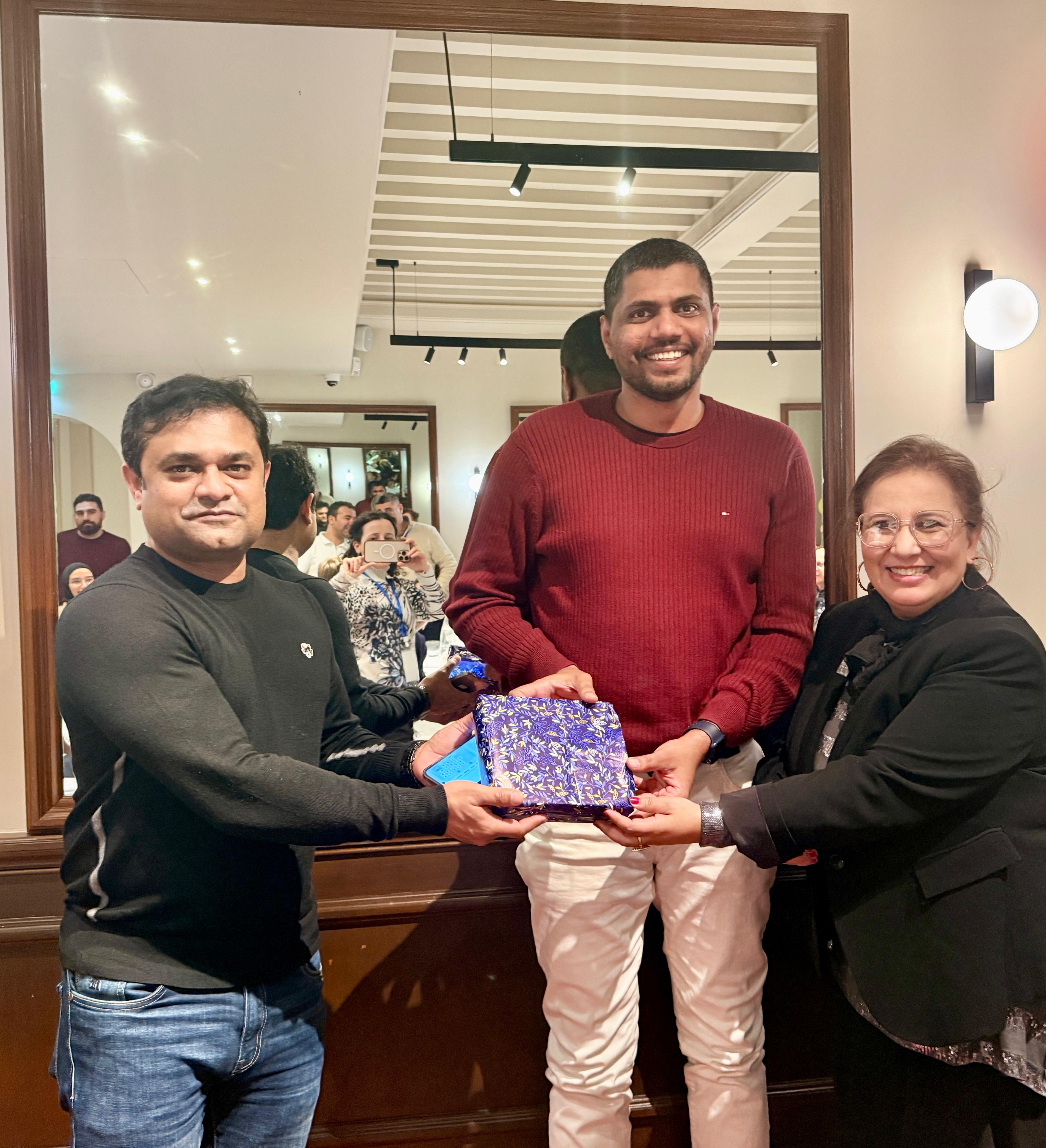
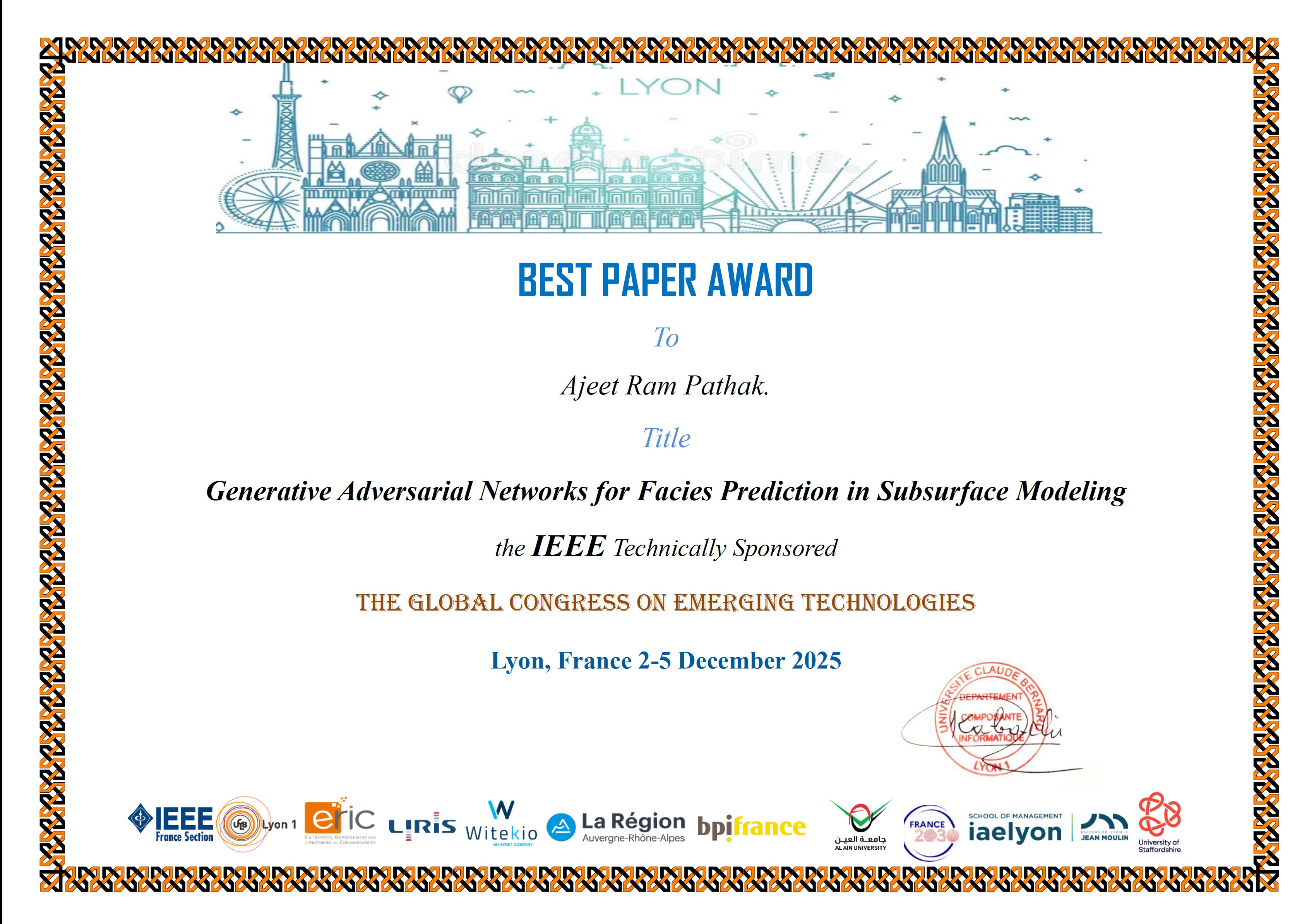
4 December - Lava Academy Podcast
CGF researchers Phil Ringrose and Chloé Delbet recently participated in the Lava Academy Podcast in Iceland, featuring in an episode entitled "Exploring Volcanoes, CO2 & the Future of Our Planet". The podcast, hosted by Iain MacKinnon and Ragnhildur Ágústsdóttir, focuses on science and insights that shape how we understand the planet. In the episode, they discuss the role volcanoes play in Earth's carbon cycle, and how geology can help us fight climate change. You can watch the video of the podcast here!
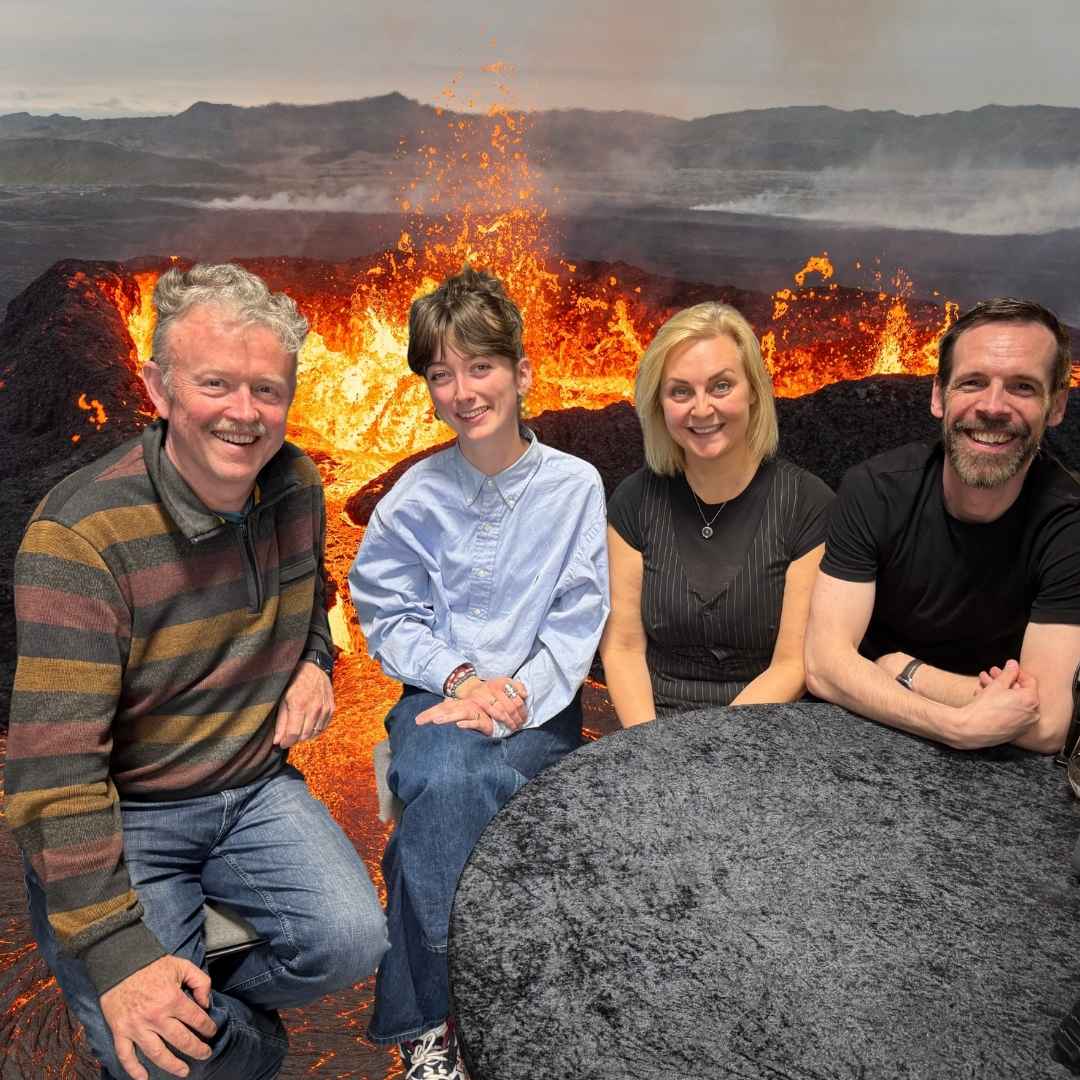
17 November - DLR press release
DLR has released a press statement on the recent Polar Explorer campaign in the LUNA facility, where researchers tested robotic systems and instruments for detecting lunar water ice under realistic conditions. You can read the article here!
12 November - COP-30 report
Many experts at NTNU and SINTEF have prepared a report for the COP30 climate change summit in Brazil, including Phil Ringrose from the CGF.
The report entitled “COP30 as a Turning Point : NTNU and SINTEF's research-based advice” presents the science and technical foundation for the actions that will hopefully be agreed at the summit. It clearly lays out the recommendations and solutions for clean energy, emissions reductions, carbon management, and efficient use of energy. Check out the report here!
29 October - LUNA Laboratory
CGF researchers Menno Buisman, Robin Rørstadbotnen and Martin Landrø participated in the LUNA laboratory experiment in Cologne 20-22 October. The LUNA lunar test facility has been built by DLR (The German Aerospace Centre) outside Cologne. It is a test hall for testing various sensors and lunar equipment like landers, rovers and geophysical instruments. Our role is to use distributed acoustic sensing for lunar exploration in a cooperation with the university of Cologne. We recorded DAS data using two different seismic sources: Traditional hammer shots and a small vibroseis source developed by a group from the University of Tokyo.


16 October - CGF Workshop
CGF arranged a 2.day workshop on 15.-16. October, where we were pleased to welcome students from the PERSEUS programme to take part for the first day.
We also had the pleasure of hosting Svein-Erik Hamran, the leader of SFI CENSSS at UiO, who gave an excellent
talk on the RIMFAX adventure (a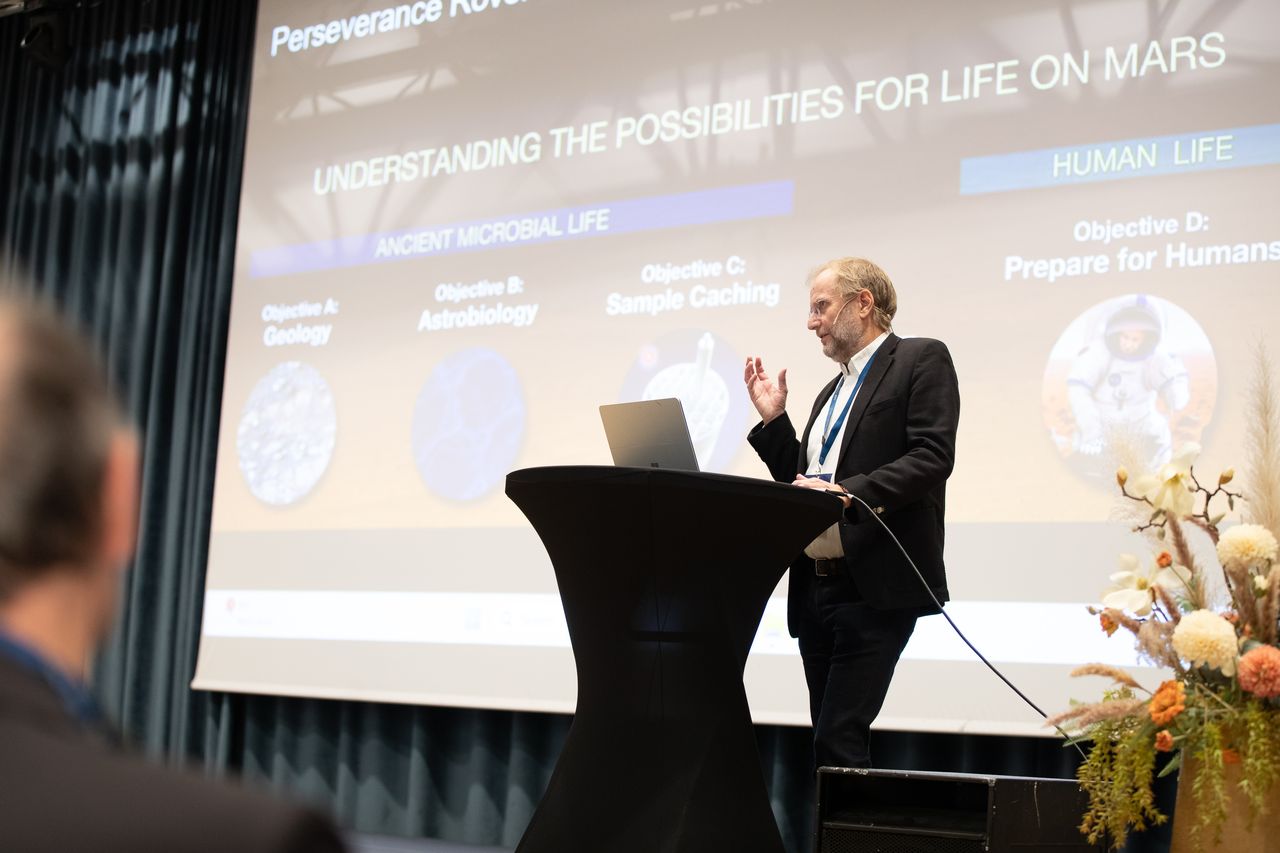
of Mars).
Our PhDS and Postdocs presented 3-minute elevator pitches of their work, followed by a poster session that created discussion and fostered communication between partners, students and faculty. We also congratulate the winners of this year's poster awards, which included one Best Poster and two Distinguished Poster awards.
The workshop had a focus on a series of challenging and inspiring presentations from our partners, which were highly appreciated by all participants. We concluded the event with group discussions on topics selected in collaboration with our partners, PhDs and Postdocs.
We greatly appreciate the participation and engagement that made the workshop a successful event!
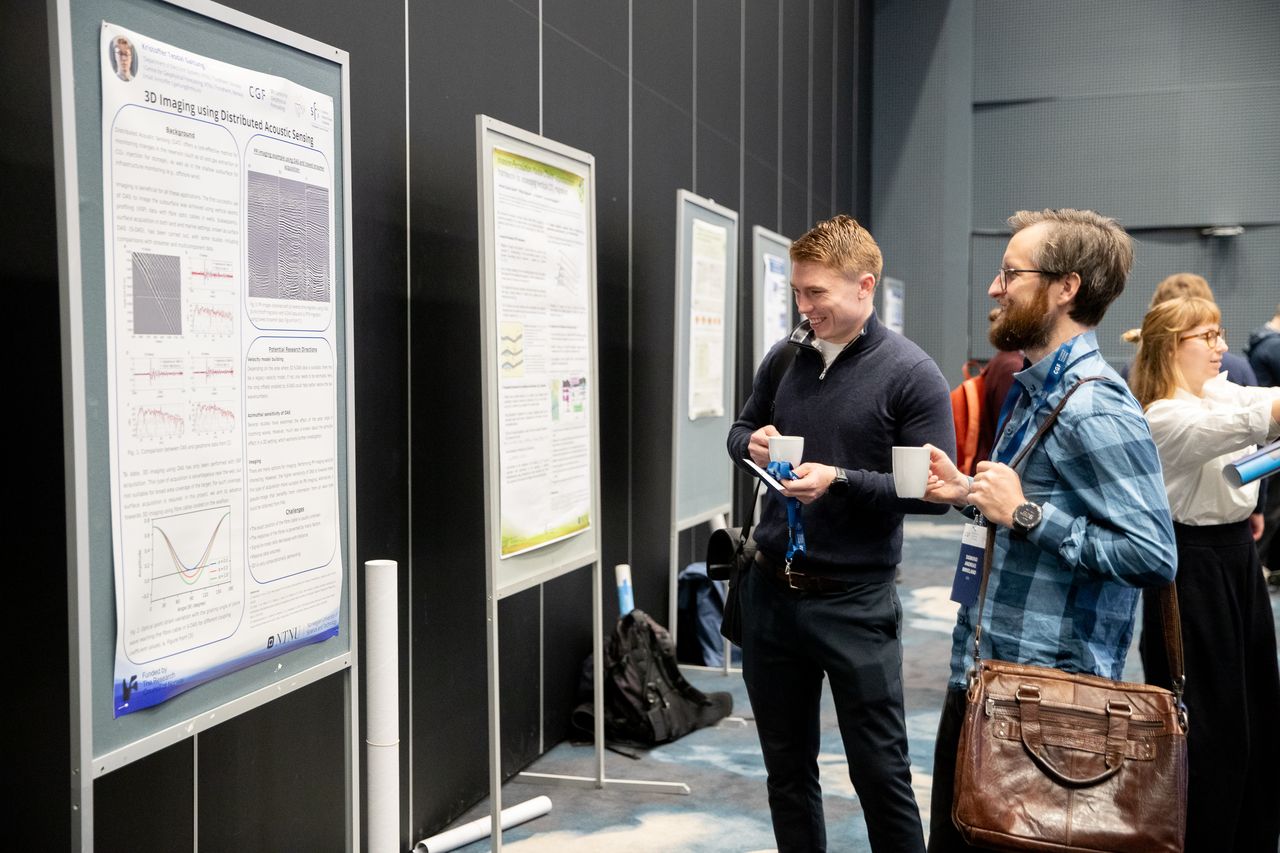
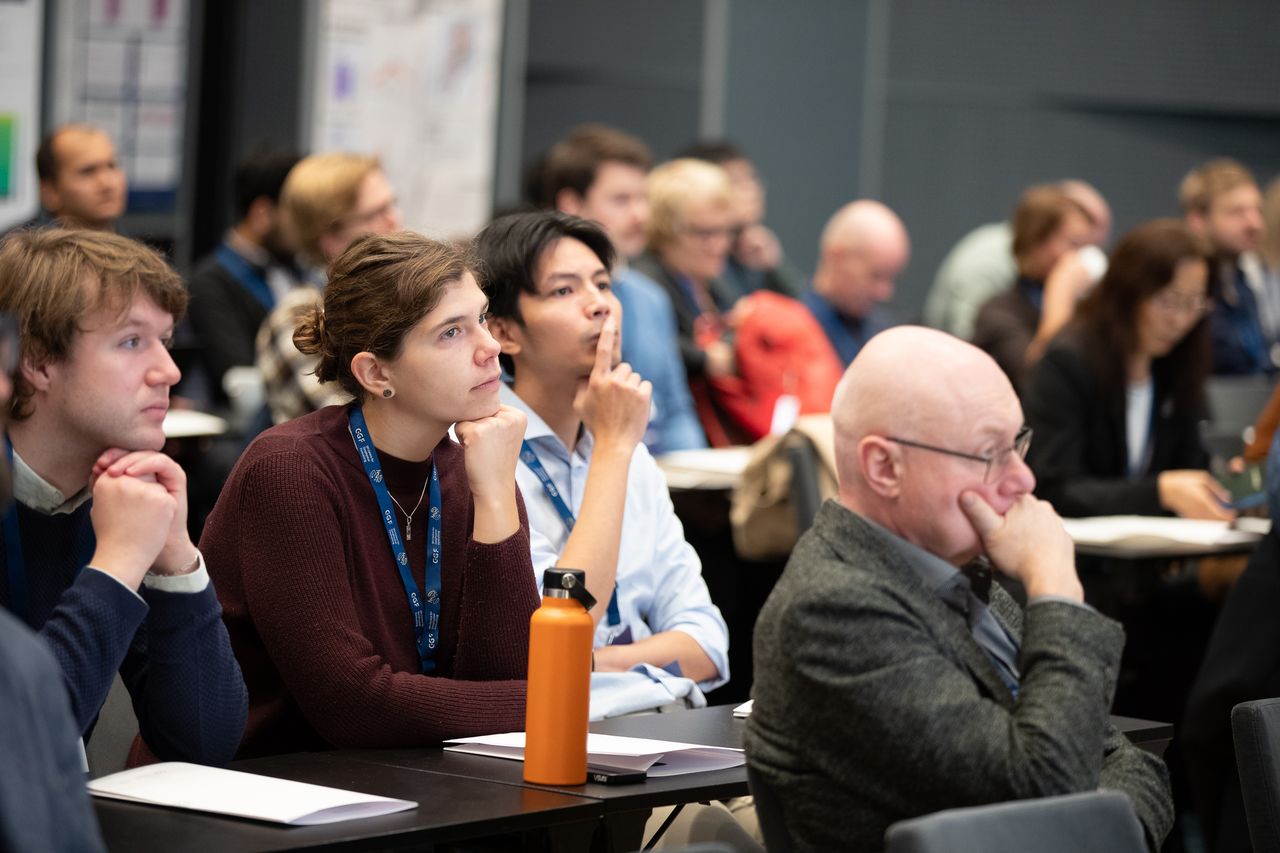

6 October - Visit from Nordic5
CGF had a pleasant visit from student representatives from the 5 Nordic tech universities: Alto, Chalmers, KTH, DTU and NTNU. They learned about the research activities within the centre and also had a short visit to the CO2-storage laboratory at CGF. The Nordic Five Tech is a strategic alliance of the five leading technical universities in Denmark, Finland, Norway and Sweden. The alliance offers joint Master’s programmes and research collaboration.
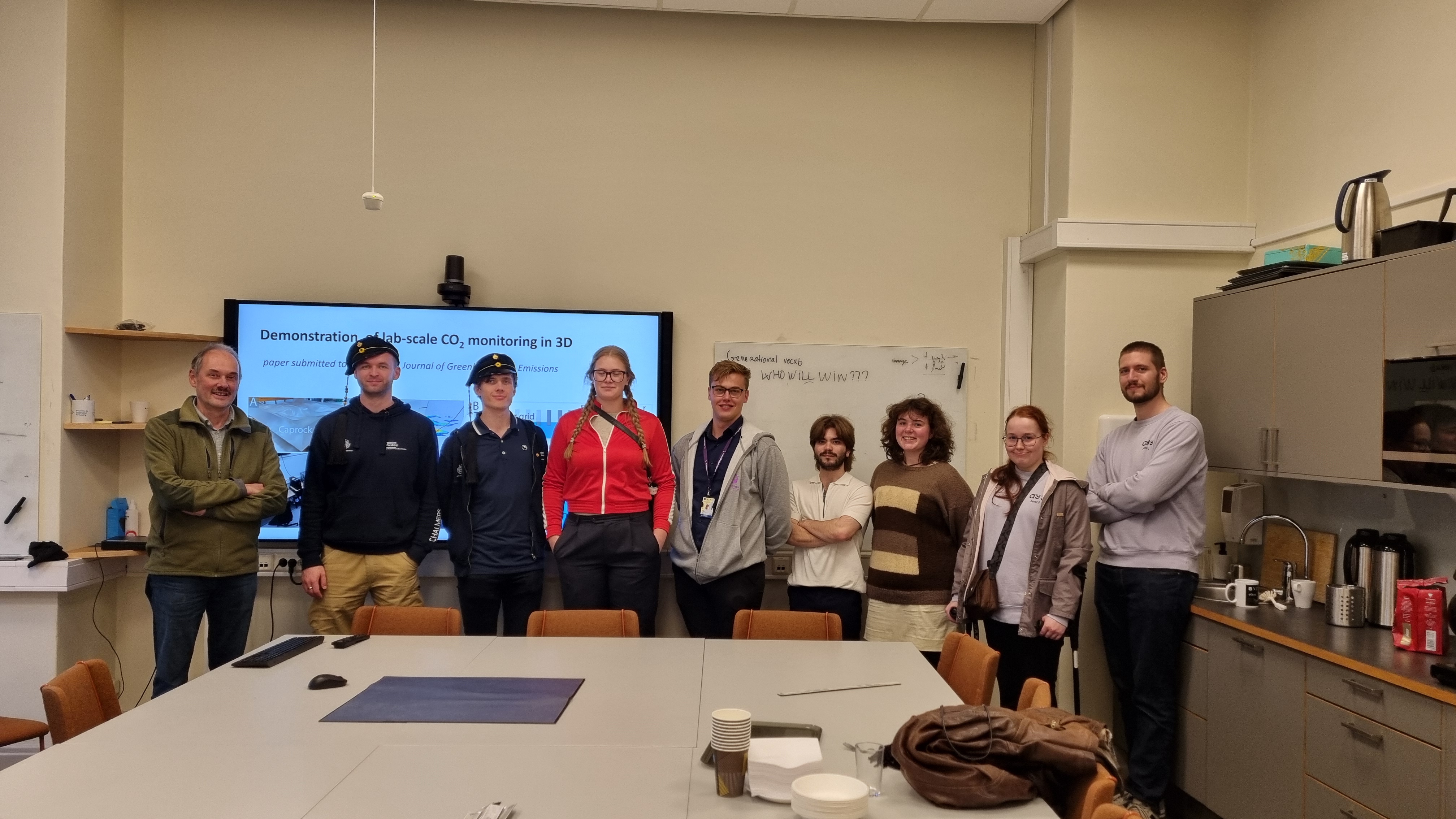
26 September - PhD Defence
We are happy to announce that PhD student Kristoffer Tesdal Galtung successfully defended his thesis!
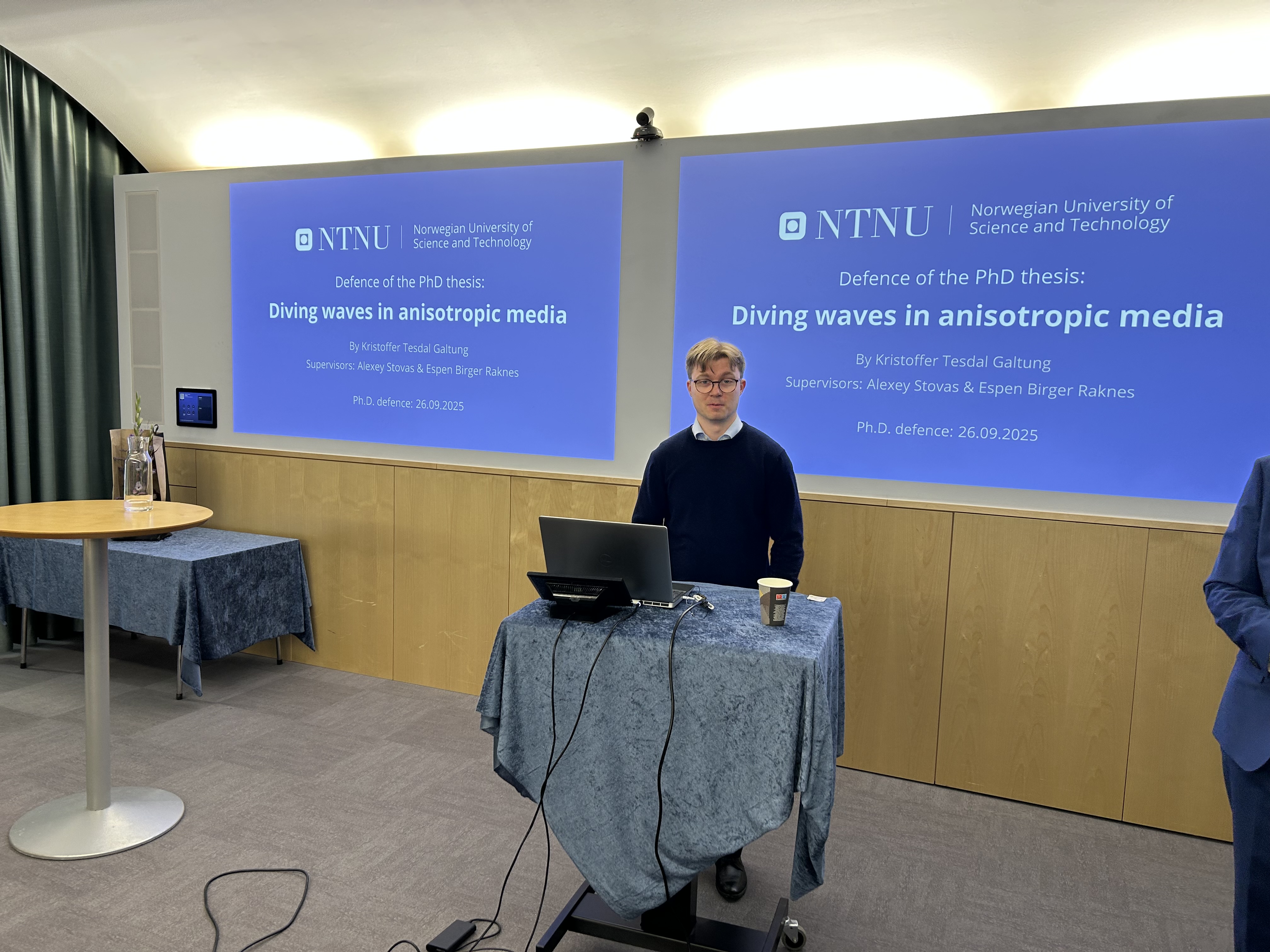
On 26th September, Kristoffer presented and defended his thesis entitled "Diving waves in anisotropic media". This marks an impressive milestone and we congratulate him on this major achievement!
We are very pleased that Kristoffer will remain with CGF as a postdoctoral fellow, and we look forward to following his work and contributions in the years ahead.
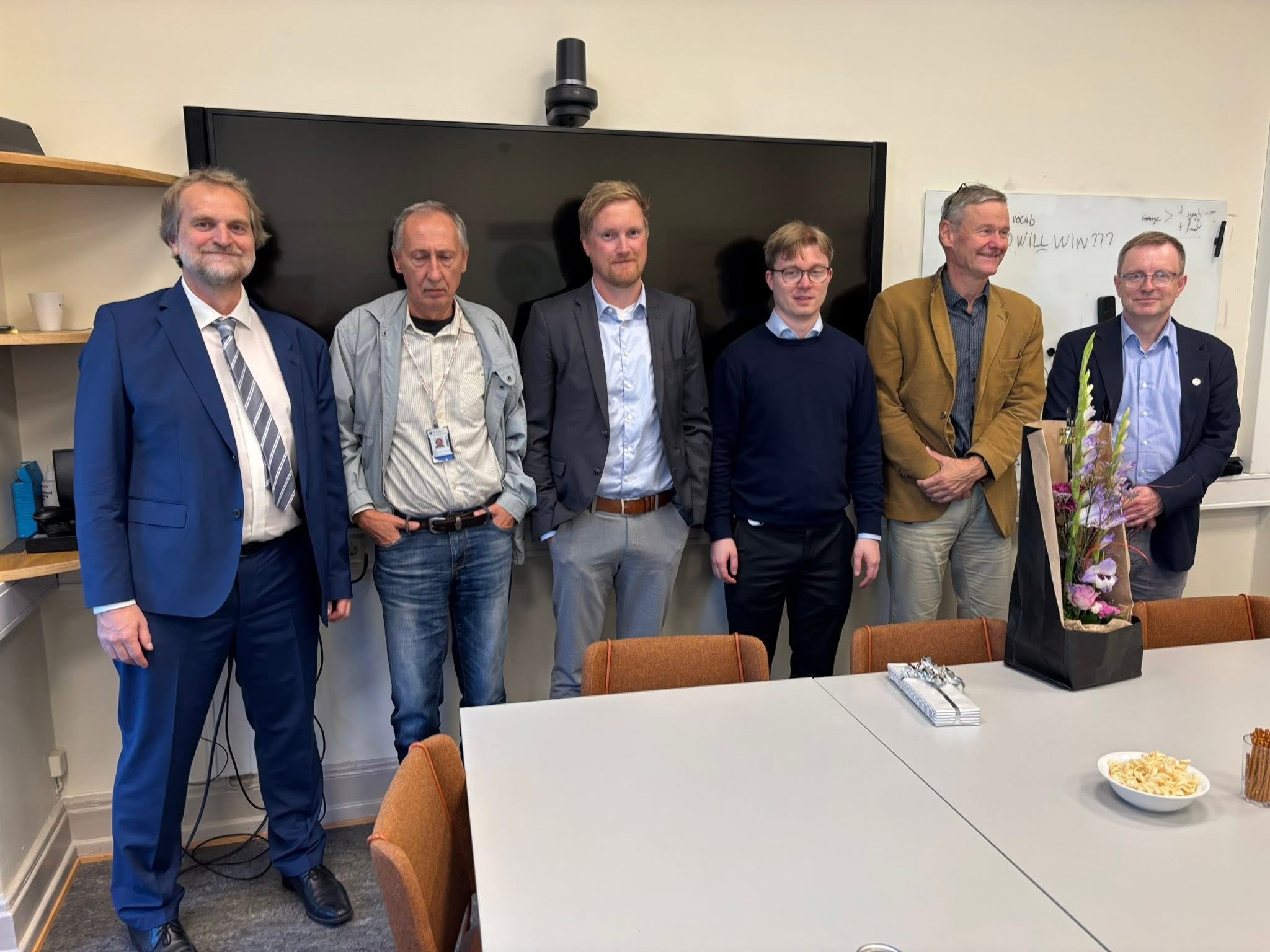
27 June - Best Poster Award
CGF is happy to congratulate PhD Chloé Delbet on winning the Best Poster Award at the Trondheim CCS (TCCS-13)
conference last week. 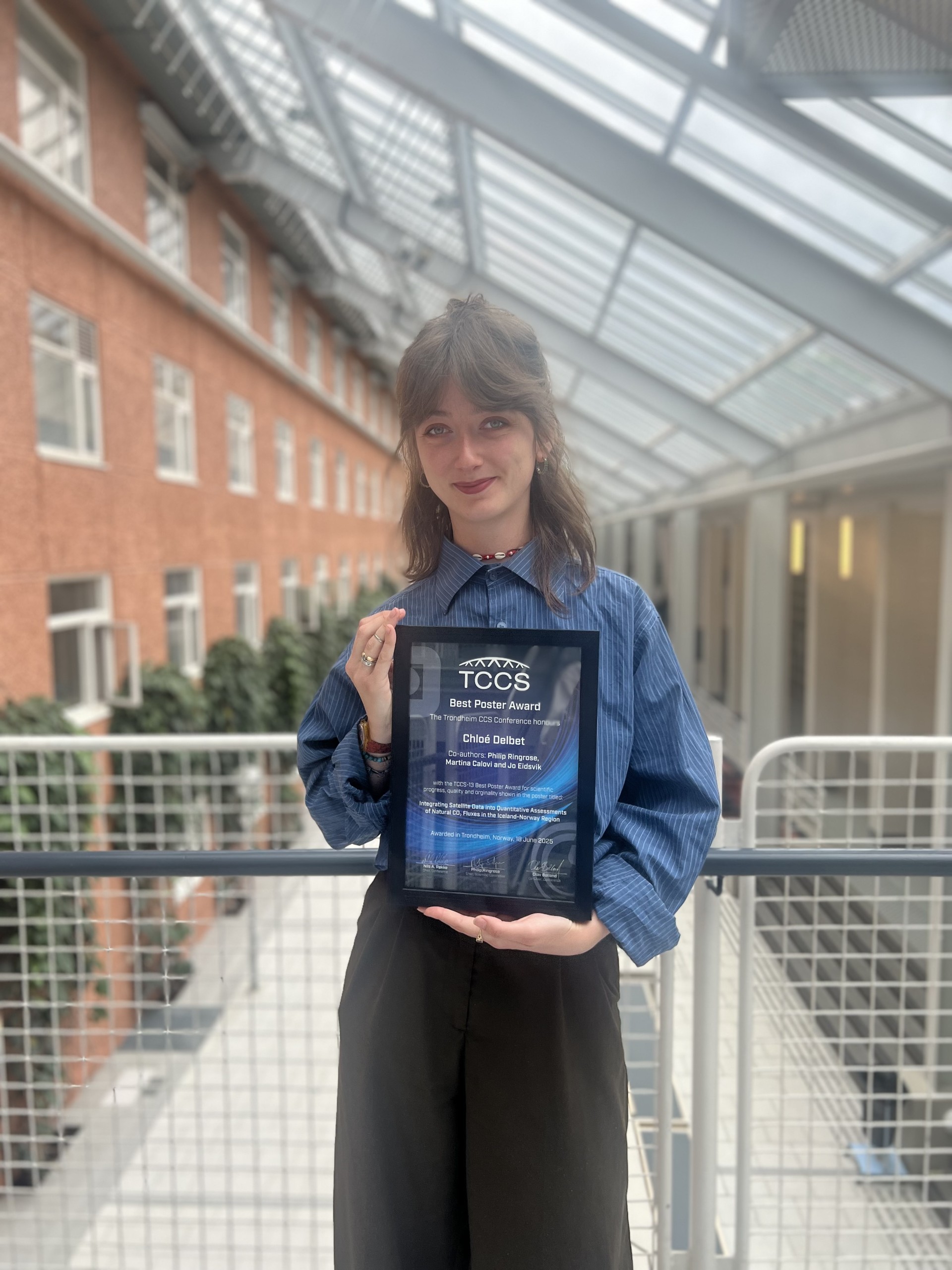
The poster presents Chloé's work on the first spaceborne analysis of CO₂ fluxes from the 2021 Fagradalsfjall volcanic eruption in Iceland, using satellite remote sensing data. This study is included in the broader goal of quantifying natural CO₂ fluxes across the North Atlantic region and investigating their relationship with regional tectonic activity, as part of Chloé's PhD project.
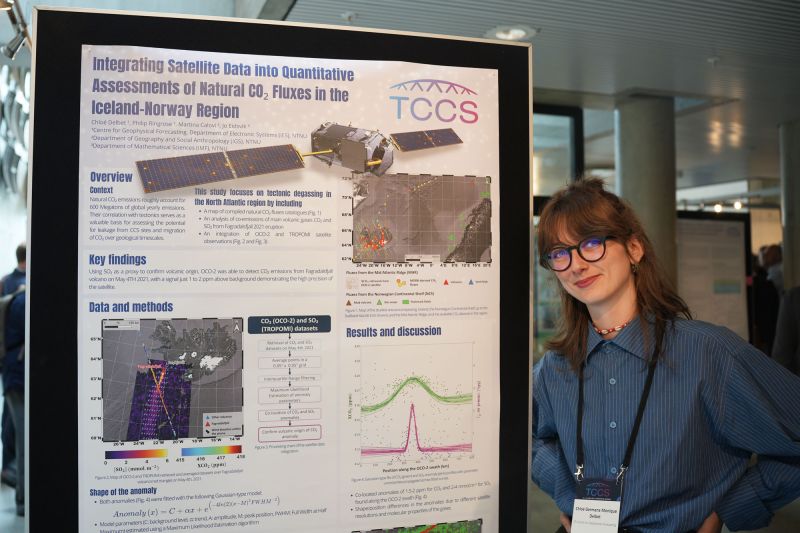
17 June - PhD Defence
CGF is delighted to announce that PhD student Nicholas Bradley has successfully defended his thesis!
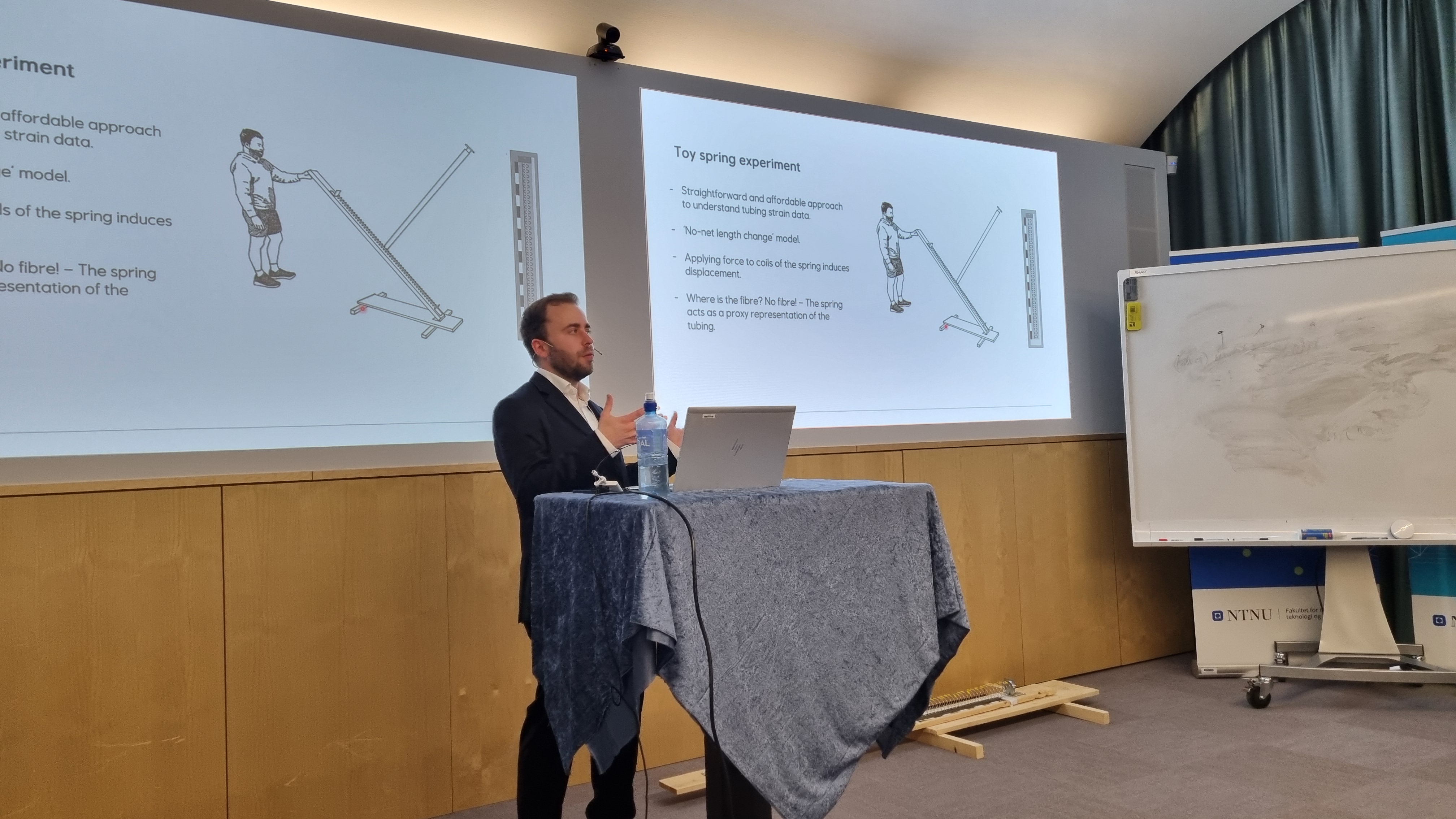
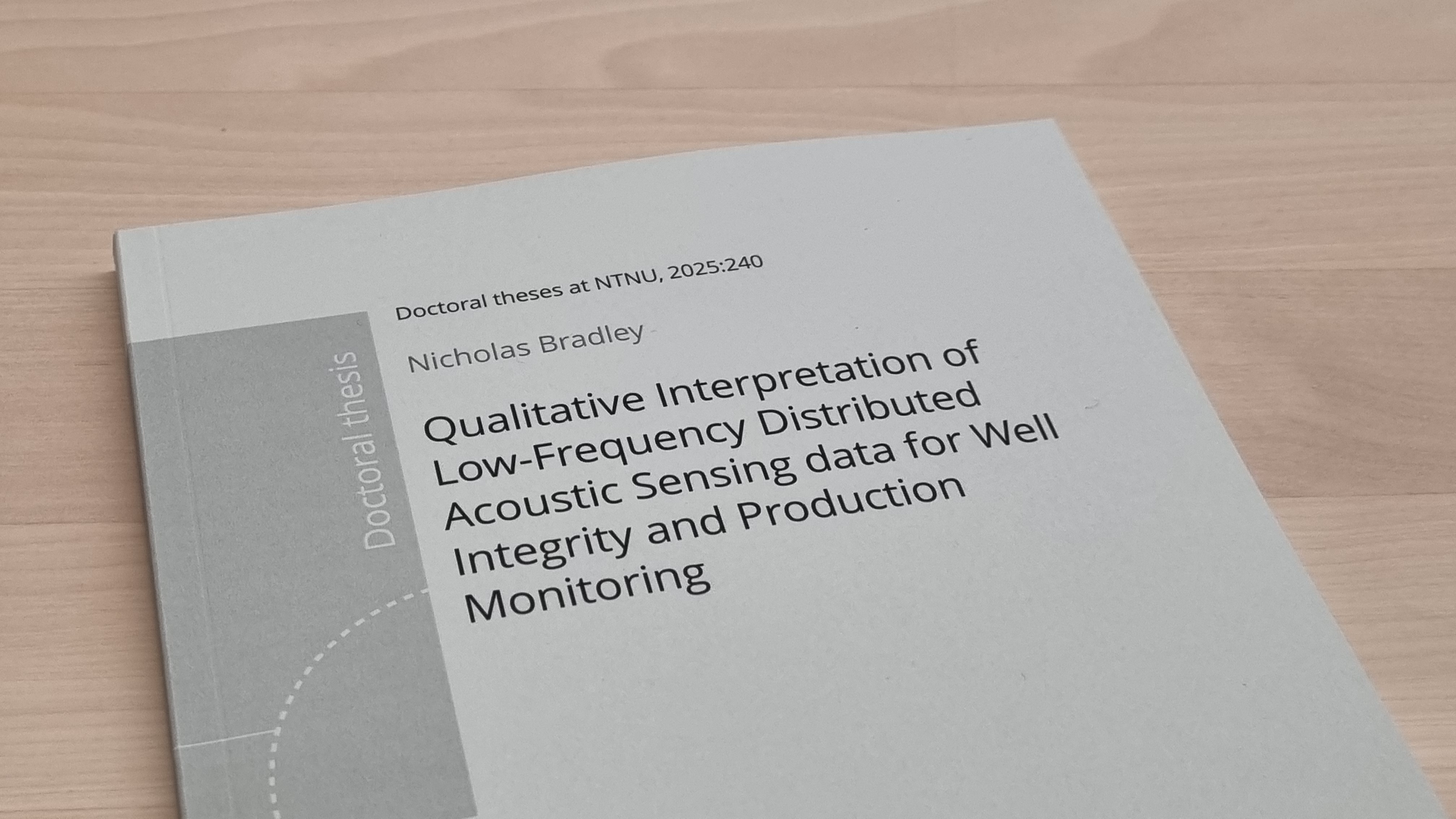
On the 17th June Nicholas presented and defended his thesis entitled "Qualitative Interpretation of Low-Frequency Distributed Acoustic Sensing Data for Well Integrity and Production Monitoring". We congratulate him on his hard work and this great achievement and thank him for the valuable contributions he has made to CGF in his tenure here.
Nicholas has started a position with CGF's industry partner Equinor, and we look forward to following his professional journey in the years to come.
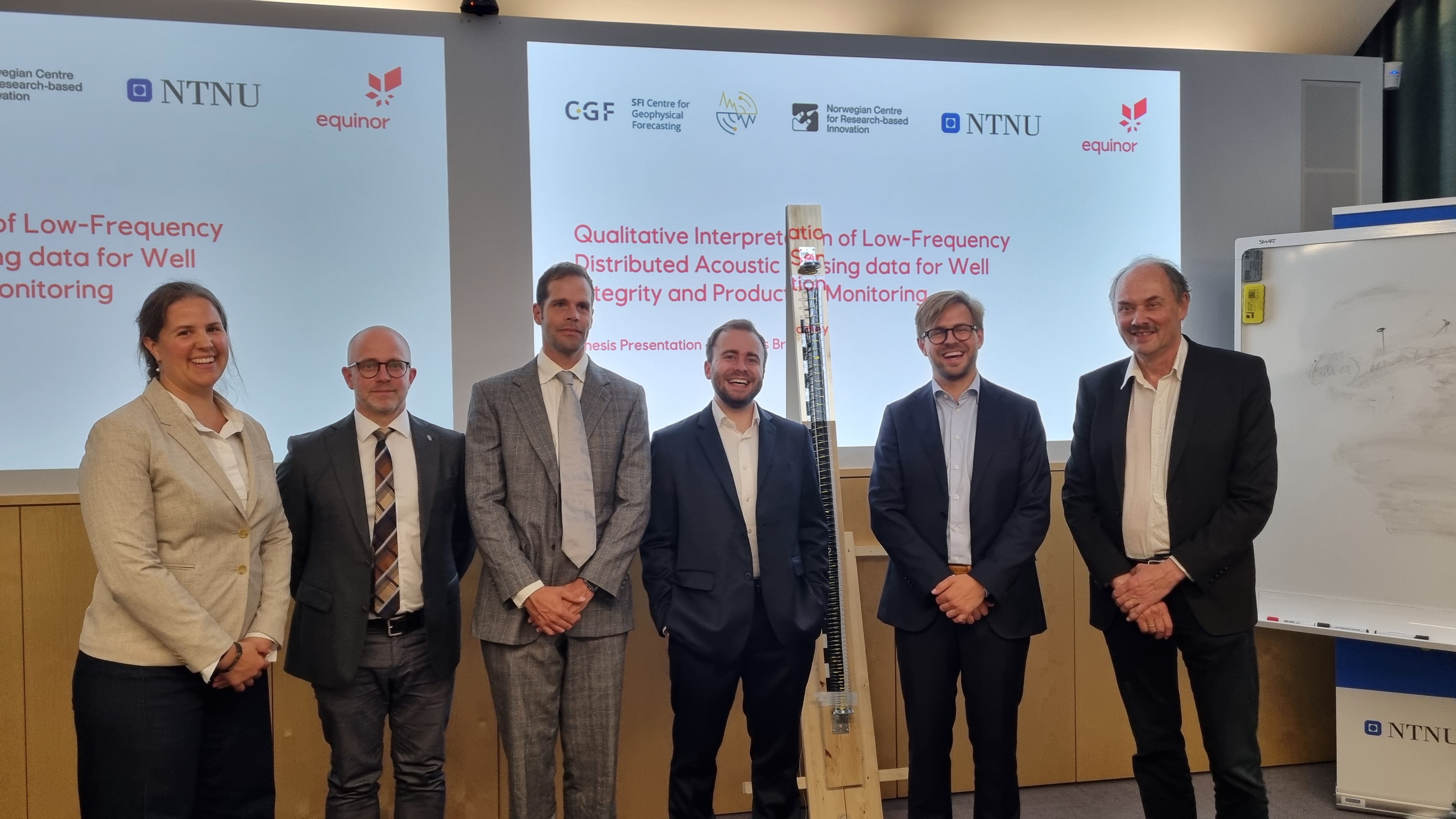
15 May - CGF research cited in UNEP report on submarine cables
CGF researchers have been cited in a new United Nations Environment Program (UNEP) report examining the impacts and opportunities of the telecoms cable in the marine environment. The report, entitled "Submarine cables and marine biodiversity" can be found here.
UNEP has also published a storytelling version of the report, which can be found here!
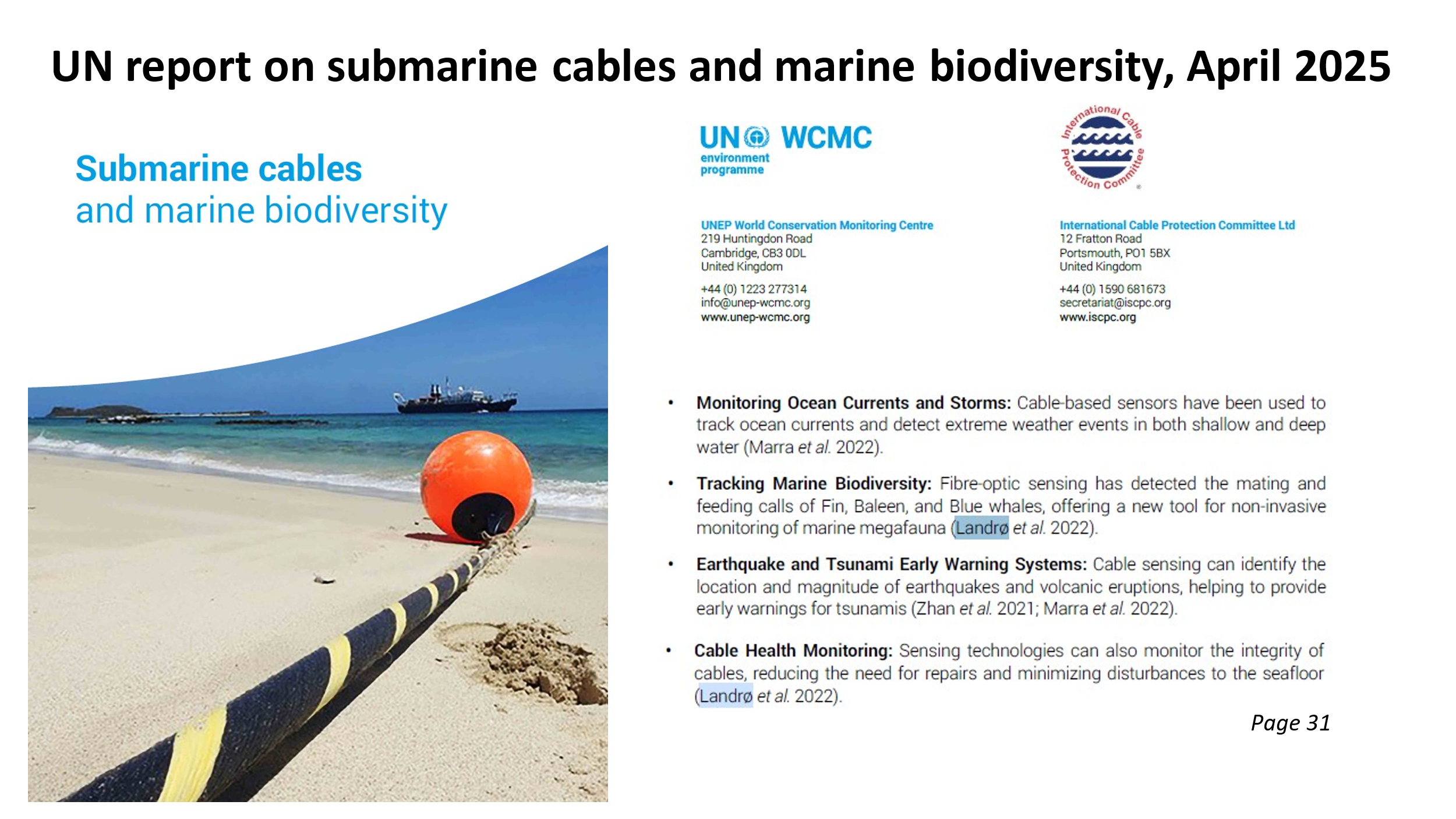
8 May - Time flies - take a moment to celebrate!
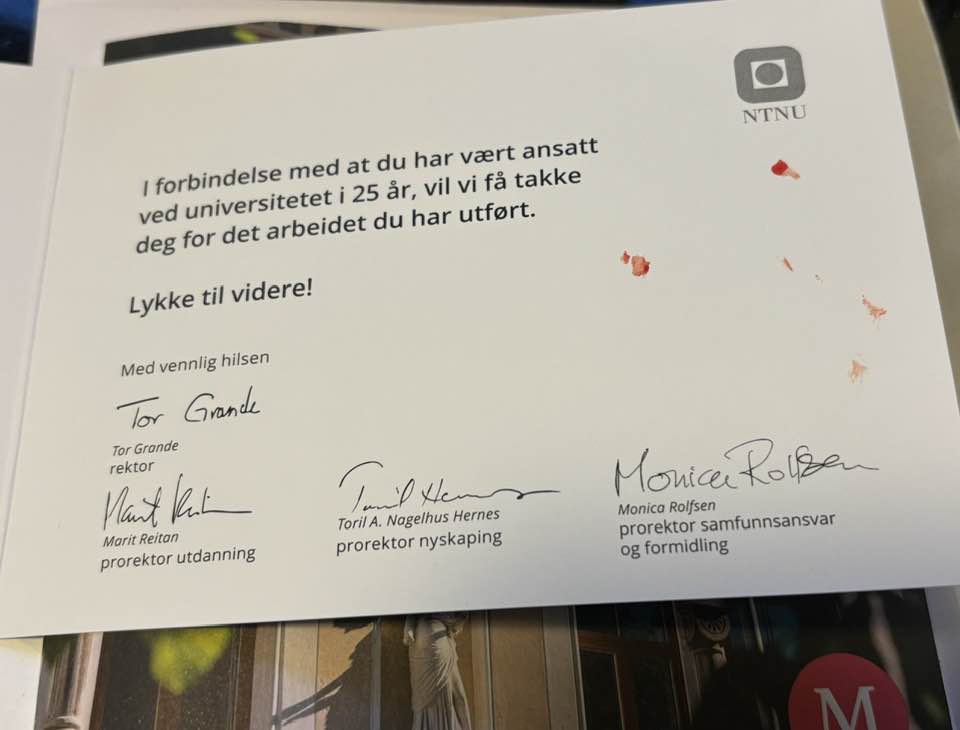
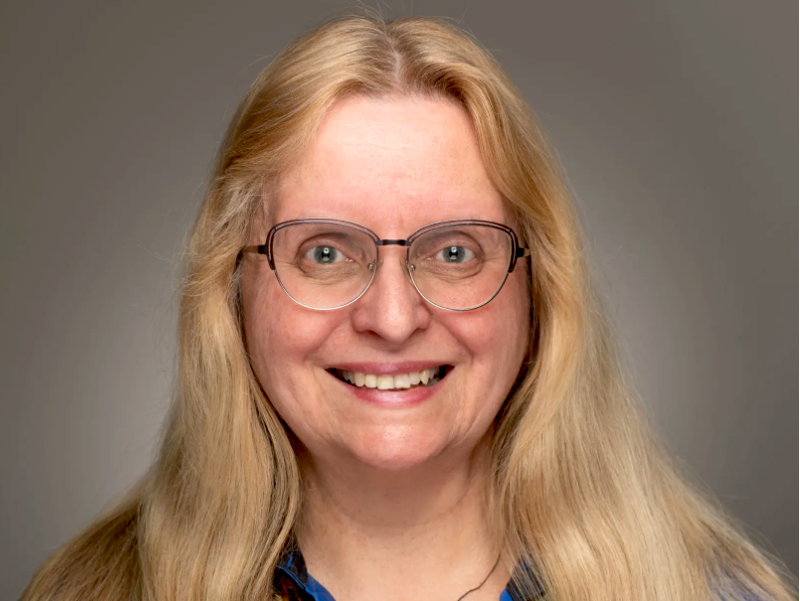
One of our WP leaders, Anne Elster, who also leads a computer science laboratory at NTNU, has just been congratulated by the Dean on her long service of 25 years at NTNU! A moment to reflect and celebrate, reminding us that if we do not seize the moment then time has a habit of slipping by. ´Life is what happens to you while you are busy making other plans´- A. Saunders, 1957. We heartily congratulate Anne on her long and vigorous service to NTNU and celebrate that she is still as energetic and full of ideas as ever!
16 April - Unusual application of DAS to 17th May celebrations in Oslo

11 February - International Day of Women and Girls in Science
In recognition of the International Day of Women and Girls in Science, CGF hosted a gathering to celebrate the contributions of women in STEM and for some discussion on both progress and remaining challenges.
The discussion covered visibility, representation, and inclusion in science, both in general and through experiences shared by participants. Mentorship and role models were highlighted as key factors in encouraging women to pursue careers in science, both through early exposure and personal experiences that showed how encouragement and visibility build confidence and motivation.
Practical challenges, such as fieldwork logistics and gendered stereotypes, were discussed, emphasizing the value of open conversations to bring less obvious issues to light. The benefits of diverse perspectives in making scientific work more engaging and creative were also highlighted.
Finally, the conversation focused on outreach and representation, considering how to ensure visibility efforts without adding extra burdens on women, as well as CGF’s role in these efforts.
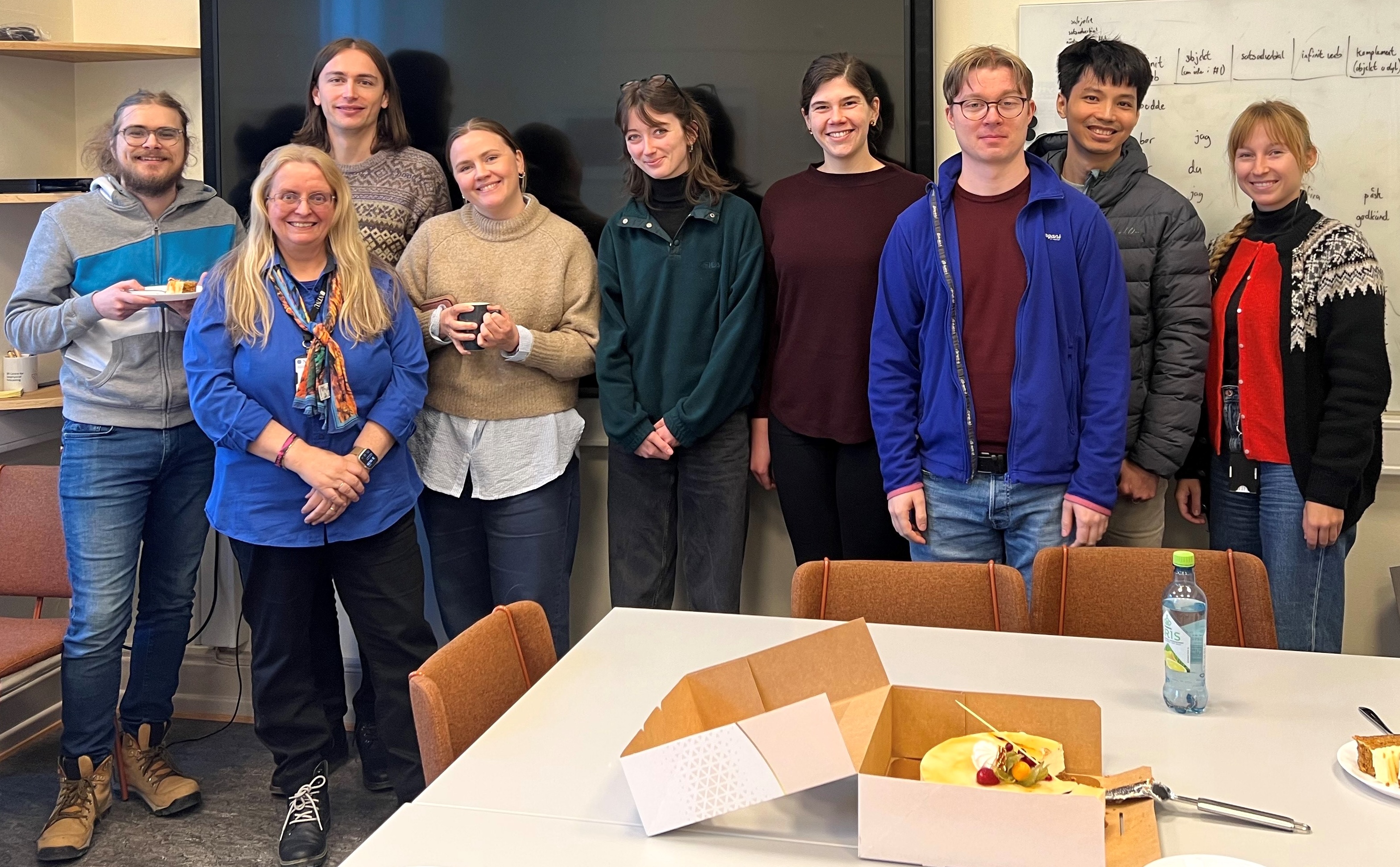
10 January - Best PhD award
Our PostDoc Kasper Hunnestad received this week the Best PhD award from the Faculty of Natural Sciences at NTNU. His pioneering experimental work was published in Nature Communications, and he is also among five finalists for an European Award within Condensed Matter Physics at the international conference for German physical Society in 2025.
Read more about the award here!
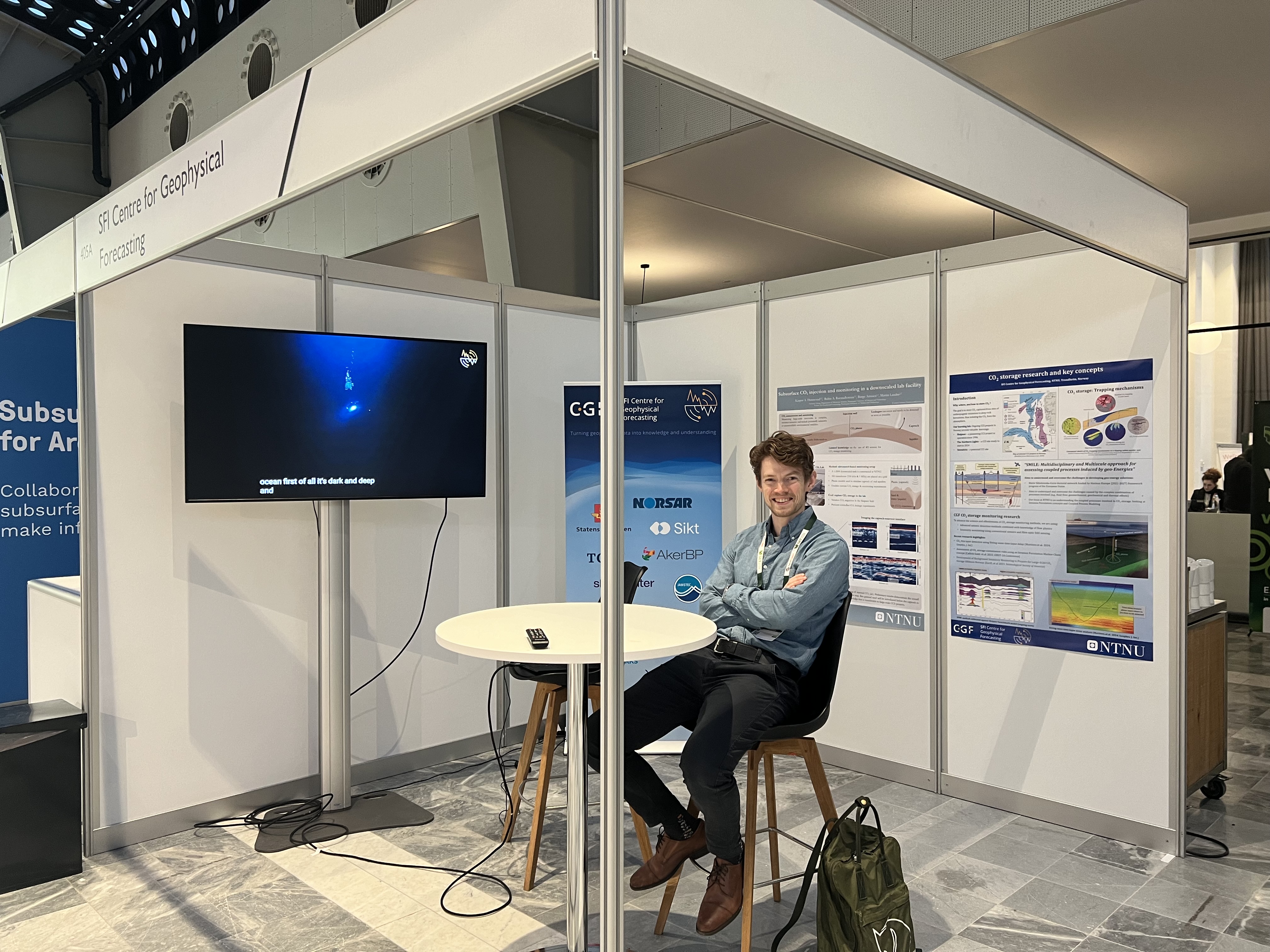
29 November - New book out on the Energy Transition, co-edited by CGF Director
We are delighted to announce the publication of a new book on 'Geophysics and the Energy Transition', just been released by Elsevier, with a chapter from CGF and co-edited by our Director, Martin Landrø.
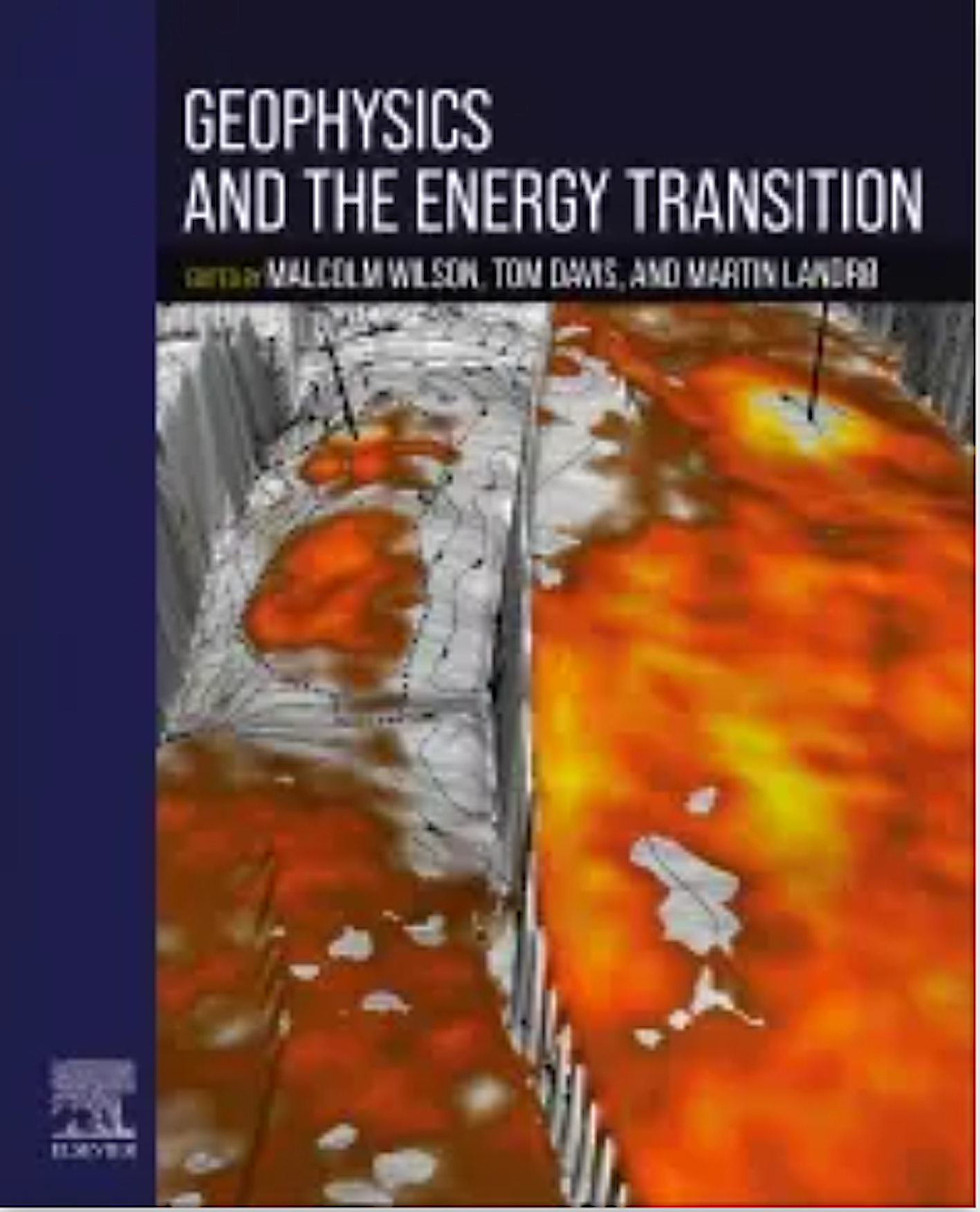
Geophysics and the Energy Transition has four sections:
- What is the Energy Transition and why storage so important;
- Selecting sites for storage;
- Advanced monitoring technology; and
- Moving forward to integrating Carbon Capture and Storage (CCS) within the Energy Transition.
The Editors are Malcolm Wilson, Tom Davis and Martin Landro. The book is in English and is available both in paperback (ISBN: 9780323959414) and as an eBook (ISBN: 9780323959421).
13 November - Sensnet Analytics awarded "Fremtidens Verdiskaper 2024"
Sensnet Analytics, a spin-off company from CGF, was awarded “Fremtidens Verdiskaper 2024” at the Sparebank1 event “Næringsdriv”. This prestigious recognition comes with a prize of 500,000 NOK and is meant as an inspiration for early-stage startups in Mid-Norway. Their five-minute pitch, delivered by Jan Langhammer and Robin Rørstadbotnen, demonstrated innovative examples of using Distributed Acoustic Sensing for power companies and highlighted other potential purposes.
Congratulation to Sensnet Analytics for this achievement!
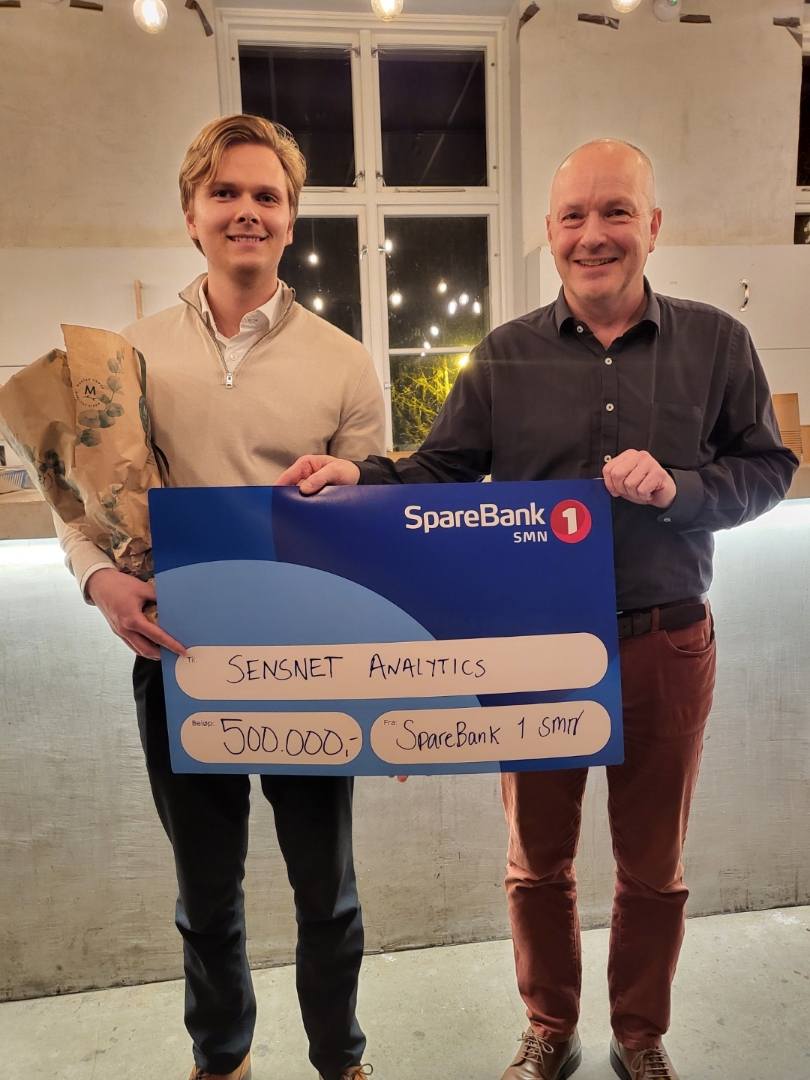
12 November - Visit from SAT
CGF had the pleasure of welcoming a group of scholars from the "Scholars at Risk" (SAT) program during their visit to NTNU. The scholars, currently studying at universities across Norway, represent a range of countries – including Afghanistan, Ukraine, Palestine, Myanmar, Turkey and Syria, and bring backgrounds from various academic disciplines. During their visit, they were introduced to a variety of CGF’s activities and demonstrated particular interest in the Centre’s research on landslides, earthquakes, and urban monitoring. Their engagement highlights how CGF’s topics resonate with such an academically broad group of students.
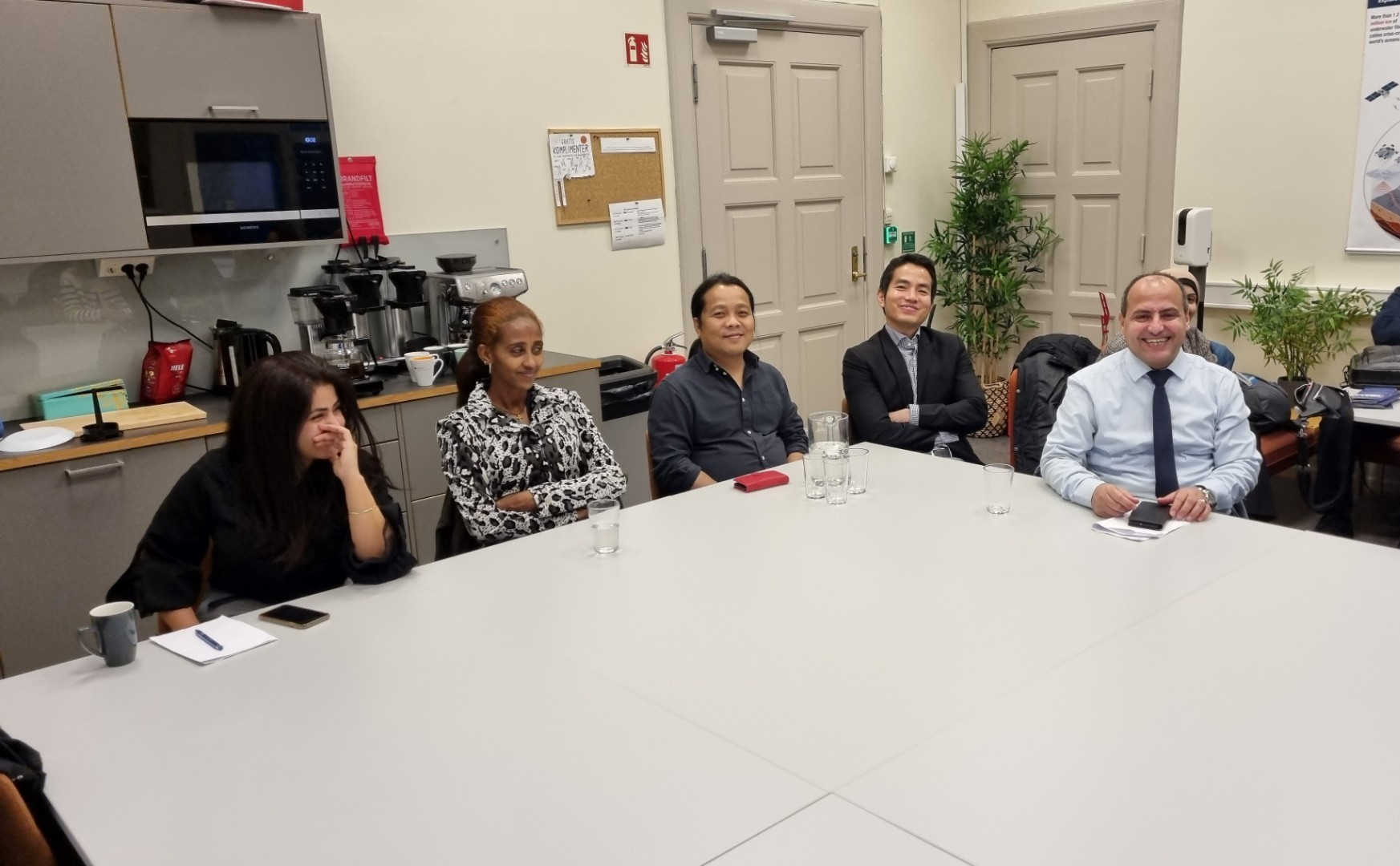
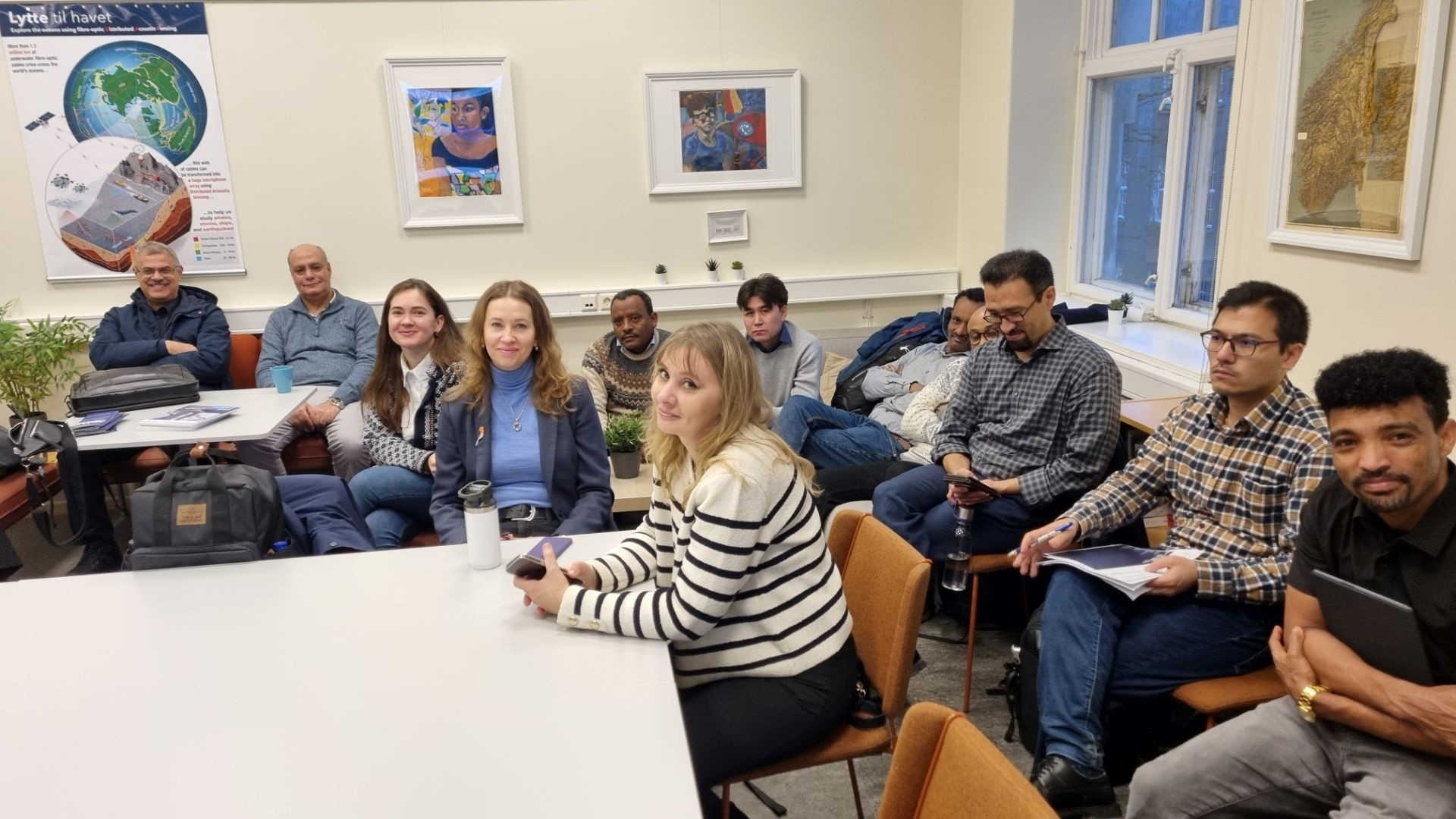
05 November - CGF has a booth at EAGE Global Energy Transition (GET2024)
CGF is excited to have a stand at the EAGE Global Energy Transition (GET2024) Conference in Rotterdam Tuesday-Thursday, where we are showcasing CGF’s activites, especially within CO2 storage and monitoring.
Please stop by and talk to us!
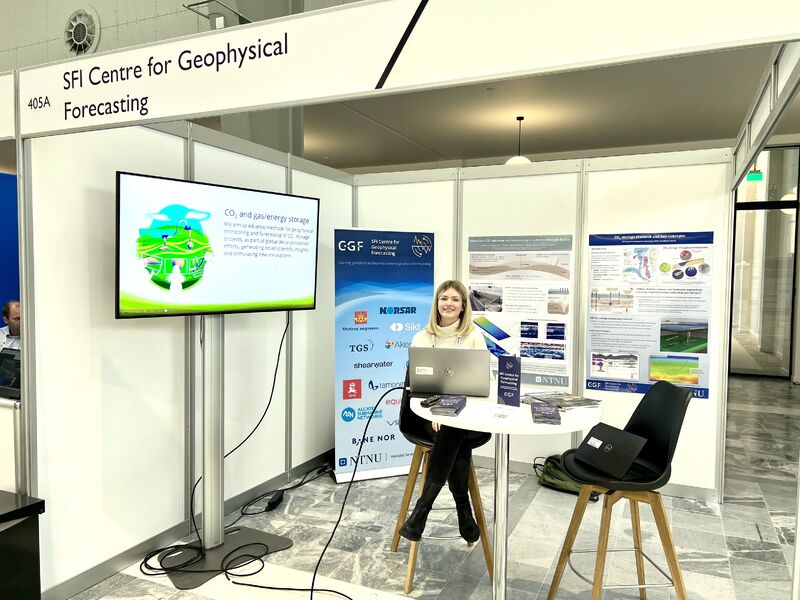
16 October - Lifetime Achievement Award to Phil Ringrose
Lifetime Achievement Awards to Prof. Phil Ringrose
The Carbon Capture and Storage Association - the lead European association for accelerating the commercial deployment of carbon capture, utilisation and storage (CCUS), presented two Lifetime Achievement Awards at their annual meeting in London 14-16 October. The awards were presented to presented to Alan James, Founder & Advisor, Storegga and Philip Ringrose, Professor, Norwegian University of Science and Technology (NTNU), and former geoscience specialist at Equinor.
In presenting the awards, CEO Olivia Powis, explained that the CCSA was honouring ‘decades-long commitment to accelerating the deployment of CCUS in the UK and Europe’ Coincidentally the UK Government recently confirmed a 21 Billion pound investment into the ‘Track 1 Decarbonisation projects’ in the UK, so there was a real mood at the CCSA conference of finally reaching the deployment stage for this technology.
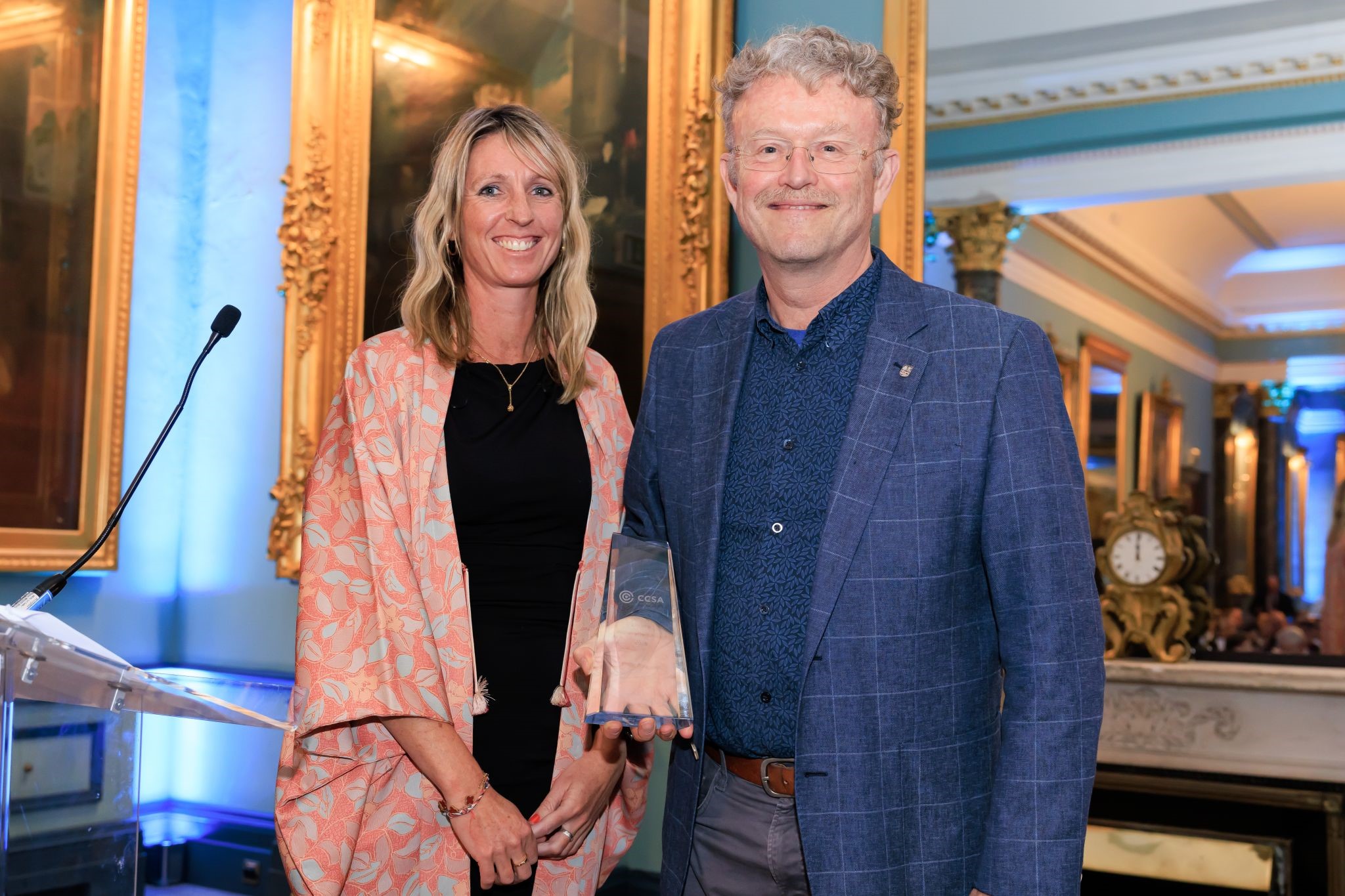
15 October - CGF groundbreaking publication cited on BBC news website
The British Broadcasting Corporation (BBC) recently cited CGF work on DAS marine acoustic detection in an online news article. The BBC cited a CGF Nature Scientific Reports article as the key publication supporting the claim that today, telecommunication cables can be used as "acoustic sensors" to detect whales, ships, storms and earthquakes in the high seas.
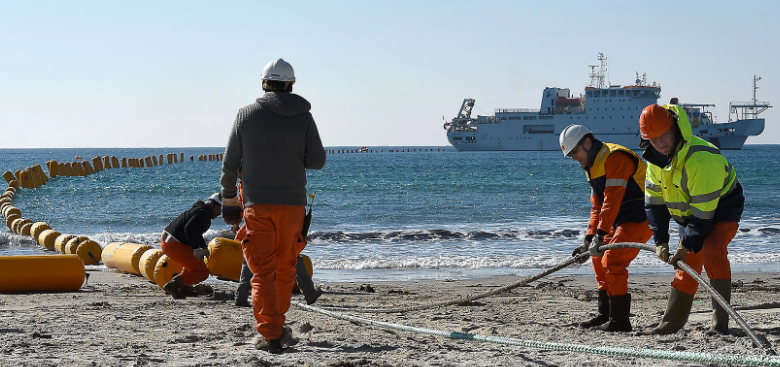
Image adapted from online article by the BBC
11 October - CGF data acquisition at Iceland
CGF has launched a data acquisition campaign at Iceland in cooperation with the University of Iceland and Farice. The purpose is to monitor whales and earthquakes using two fibre optic cables offshore Iceland and one fibre connecting Reykjavik and Selfos. The plan is to finalise the DAS experiment next week and then CGF researchers will get access to data for several weeks for analysis. Robin Rørstadbotnen has been responsible for installing three DAS interrogators at Iceland with assistance from Ljosleidarinn (on-shore fibre) and Farice (offshore fibres).
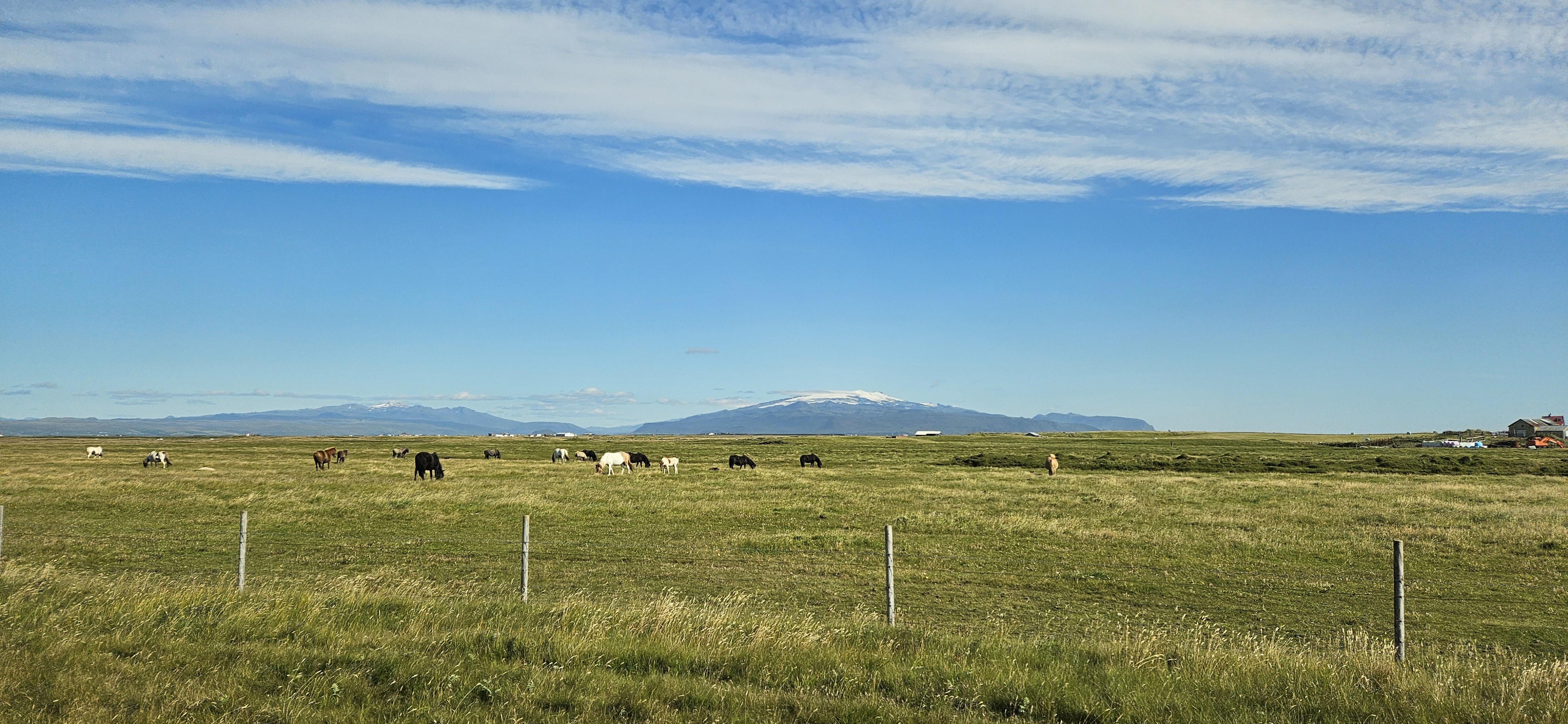
30 September - Introducing new arrival at CGF!
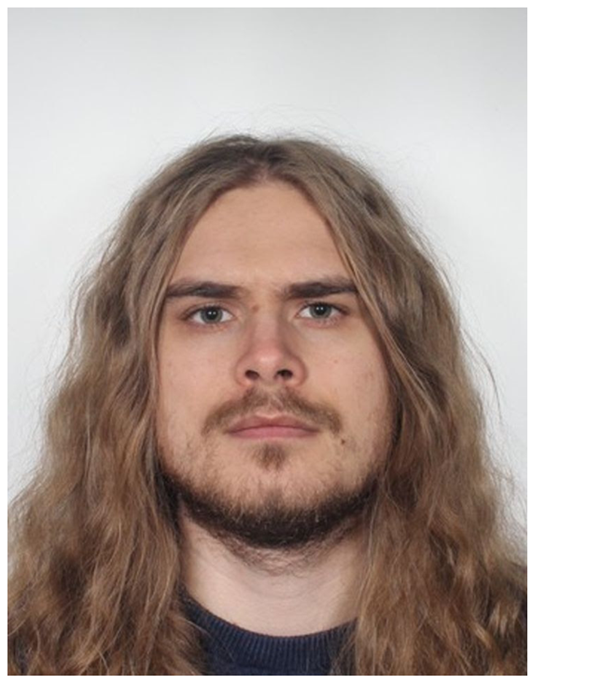
27 August - Guest researcher visit
In August we had the pleasure of hosting Anthony Sladen from CNRS in Nice for a month long stay at CGF. Anthony has long experience from working on various projects related to use of Distributed Acoustic Sensing, and this gave CGF researchers a unique opportunity to discuss several issues related to analysis and practical use of DAS data. Anthony gave talks and visited with our partner ASN during his stay in Trondheim. He is also involved in the newly started EU Seasounds projects, where the research focus is on characterisation and mitigation of sea noise pollution, which also involves several researchers from CGF.
18 August - Welcoming new arrivals at CGF!
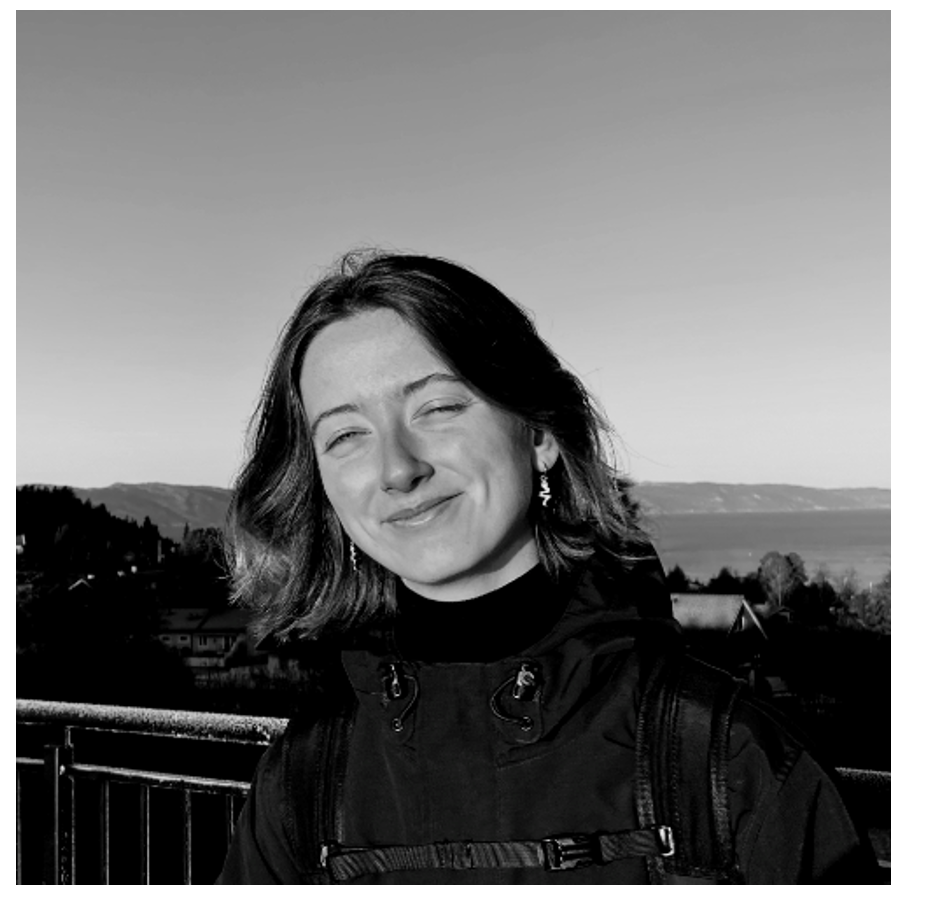
Chloé previously completed a geo-engineering Master's degree, where she discovered her interest in geophysics and desire to pursue doctoral studies. Her Master's thesis was on the subject of coupled hydrogephysical inversion to characterise transport properties of polluted aquifers in Denmark. Chloé joins CGF as part of WP2 CO2 and gas/energy storage. The topic of her PhD is related to CO2 storage and consists in getting insights into natural C02 emissions and their correlateion with tectonics in the North Atlantic region using multi-scale analysis of geophysical data.
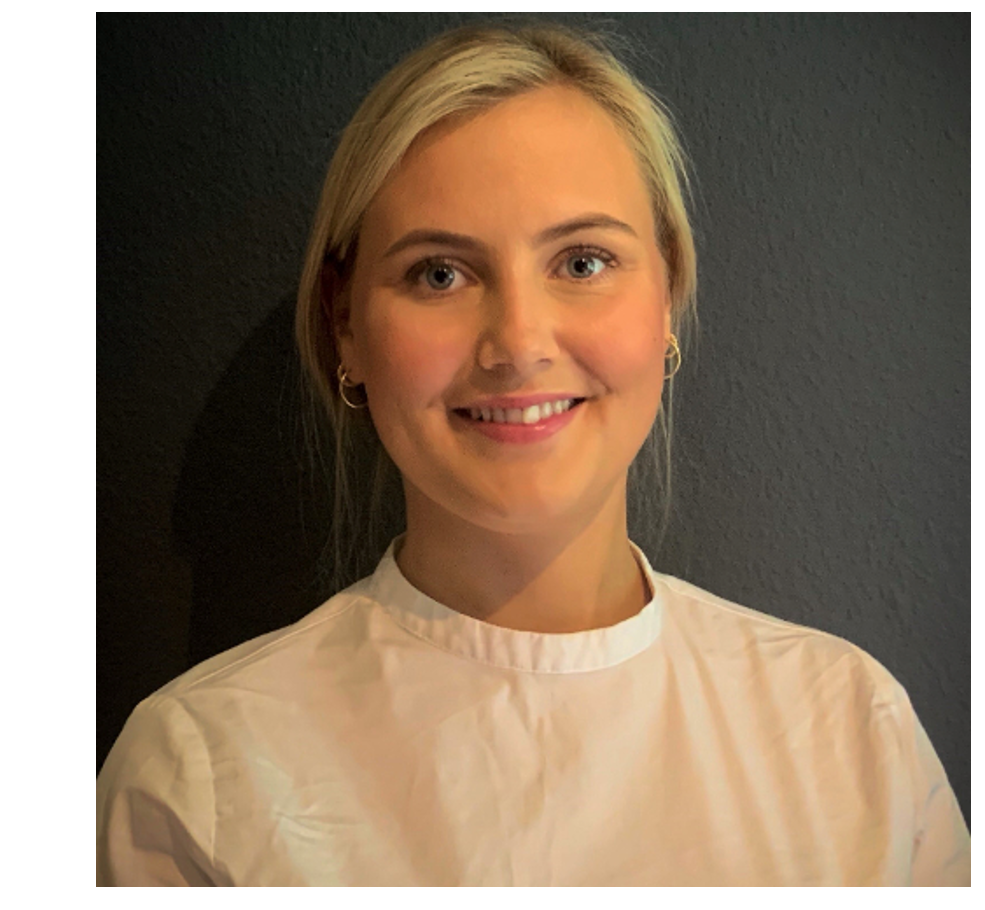
10 June - Desiderius Erasmus Award winner
CGF researcher Prof. Phil Ringrose (left) was one of five awardees at the recent EAGE Annual Conference in Oslo on 10-13th June 2024. Phil received the prestigious Desiderius Erasmus Award in recognition of his outstanding achievements in the field of CCS and reservoir modelling. Interestingly, our own Prof. Bjørn Ursin also received this award in 2008.
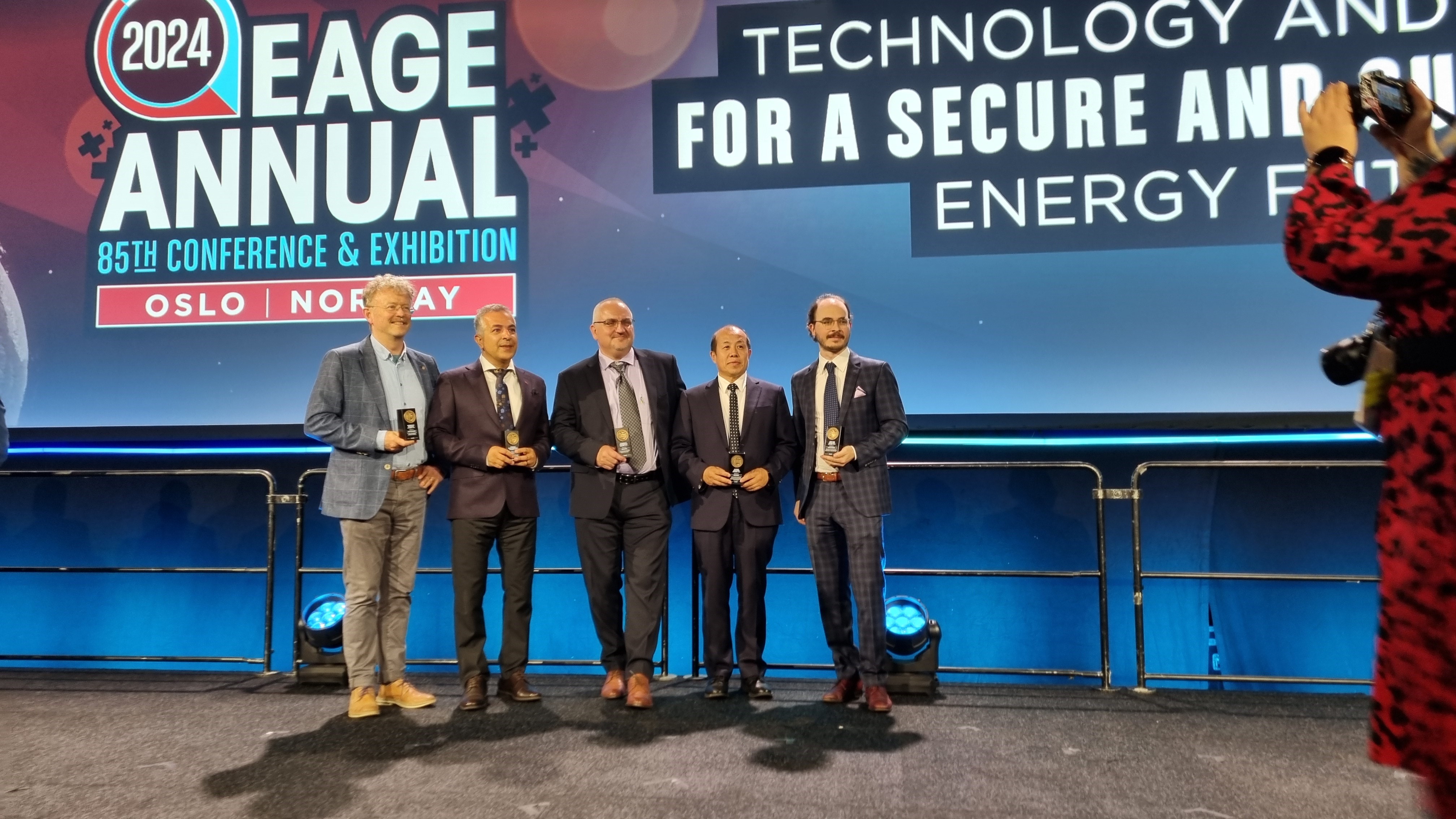
6 June - Visit from KIOST
On the 6th of June, the CGF CO2 storage group was pleased to welcome a delegation from the Korea Institute of Ocean Science & Technology (KIOST) who are leading the Korea CCS priject on CCS site monitoring and risk assessment. The group was very pleased with the fact-finding tour - especially when they discovered one of us spoke Korean fluently!
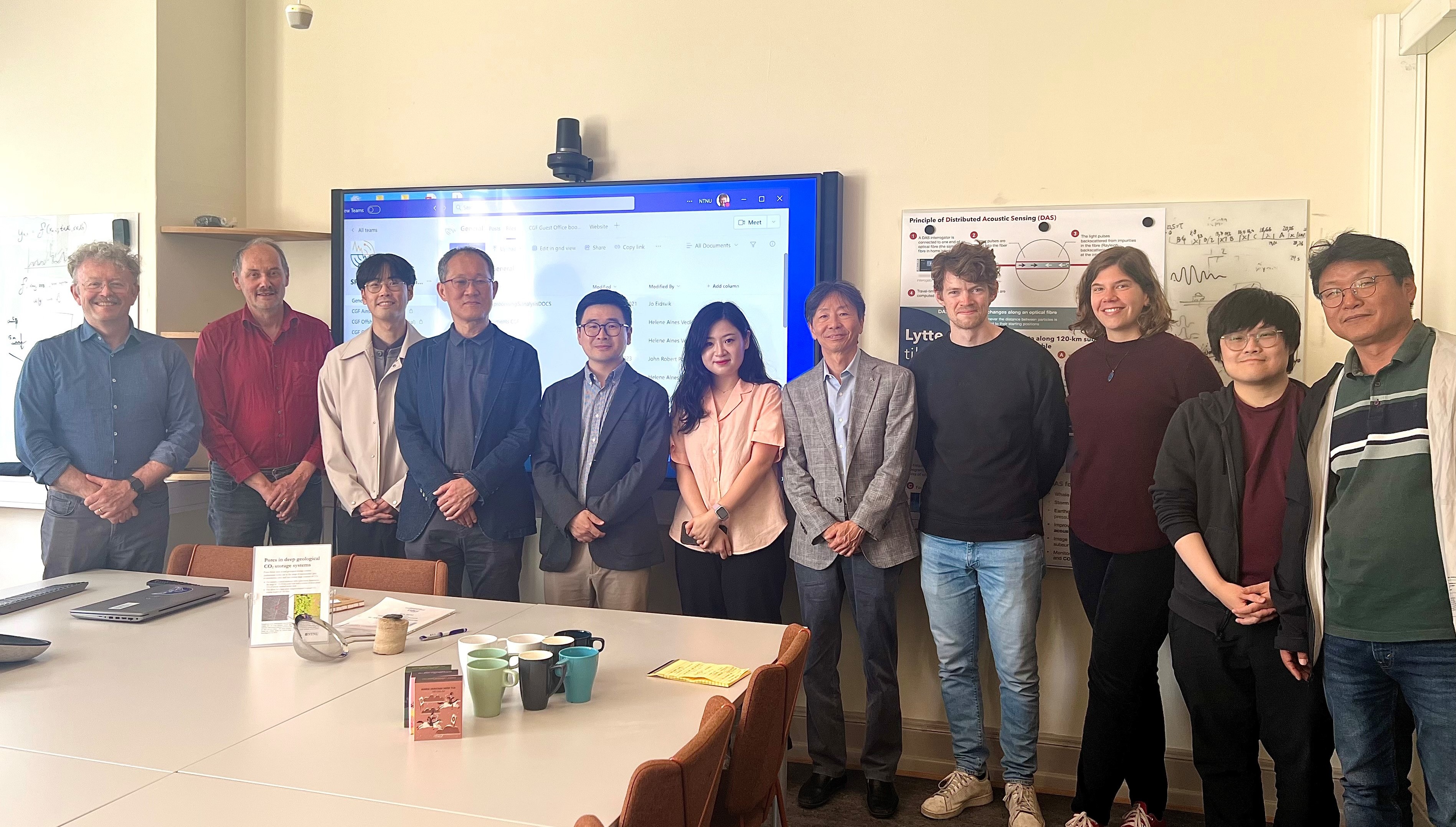
20 May - Celebrating the fruits of our students' labours!
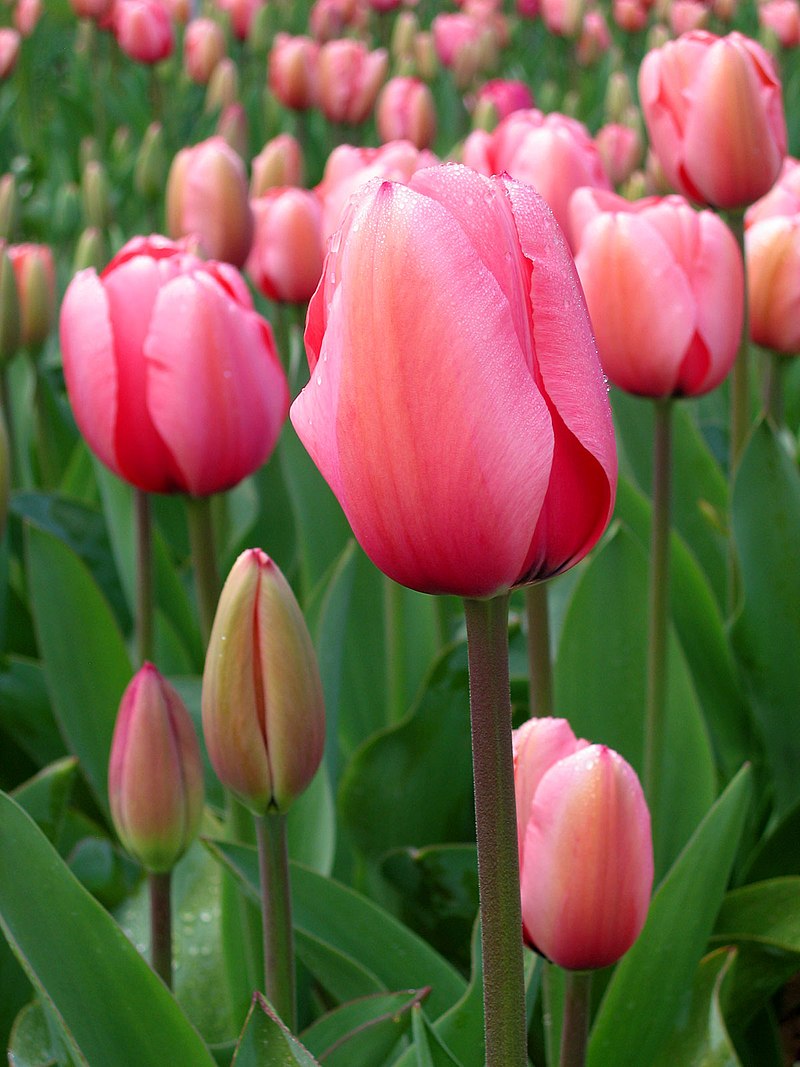
- Ben Qin, Chenyang Ye, Jingao Liu, Shichun Huang, Shunguo Wang and J. ZhangZhou. (2024) Mapping Global Lithospheric Mantle Pressure-Temperature Conditions by Machine-Learning Thermobarometry. Geophysical Research Letters
- Kittinat Taweesintananon, Robin André Rørstadbotnen, Martin Landrø, Ståle Emil Johansen, Børge Arntsen, Matthias Forwick, and Alfred Hanssen. (2024) Near-surface characterization using shear-wave resonances: A case study from offshore Svalbard, Norway (seg.org) Geophysics.
- Kittinat Taweesintananon, Martin Landrø, Sirikarn Narongsirikul and Per Gunnar Folstad. (2024). Angle-dependent 4D seismic time-strain inversion for estimating subsurface thickness and velocity changes | GEOPHYSICS (seg.org)
- Kristoffer Galtung and Alexey Stovas. (2024) Diving Waves in Acoustic Factorized Orthorhombic Media. Accepted in Geophysical Prospecting
- Mina Spremic, Jo, Eidsvik and Per Åge Avseth. (2024) Bayesian rock-physics inversion using a localized ensemble-based approach — With an application to the Alvheim field. Geophysics, 89 (2)
- Ricardo Martinez, Vetle Vinje, Alexey Stovas, Joachim Mispel, Philip Ringrose, Kenneth Duffaut and Martin Landrø. (2024) Diving-wave time-lapse delay for CO2 thin layer detection. Geophysical Journal International, 237(1), 235-249.
- Susan Anyosa, Jo Eidsvik and Dario Grana. (2024) Evaluating geophysical monitoring strategies for a CO2 storage project. Computers & Geosciences 185
- Vilja Koski and Jo Eidsvik. (2024) Sampling design methods for making improved lake management decisions. Environmetrics
We hope these CGF researchers will set an encouraging and inspirational example for all our students and researchers to break the tyranny of the blank page and get their good work out into the world!
18 May - New book from one of our key professors and WP leaders!
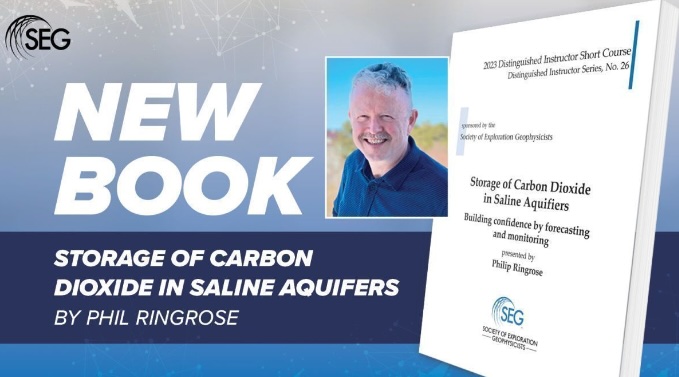
Interest in Carbon Capture and Storage is growing rapidly as it becomes clear that CCS is a crucial part of global efforts to reduce greenhouse gas emissions into the atmosphere. Prof. Phil Ringrose is our leader for the research workpackage on CCS. To support this growth in CCS technology, an acceleration in new storage project developments is needed. This new book by NTNU Professor Philip Ringrose reviews the science and technology underpinning CO2 storage in deep saline aquifer formations using insights from several industrial-scale projects.
The book may be ordered from: https://go.seg.org/3qDxlr1
15 May - Honorable mention for Best Paper in Geophysics
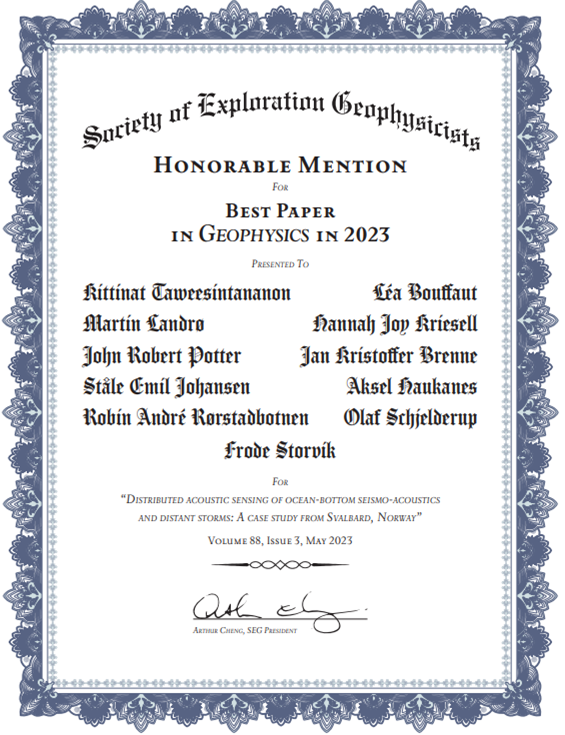
We are very excited to announce that a CGF paper with our former PhD student Kittinat Taweesintananon as lead author received an honourable mention for Best Paper in Geophysics 2023. The paper, "Distributed acoustic sensing of ocean-bottom seismo-acoustics and distant storms: A case study from Svalbard, Norway", was published in Geophysics 99, May 2023 and was selected as one of the five best articles for this year. Geophysics typically publish around 400 papers yearly, so this underlines Kittinat's excellent contribution to the journal. Congratulations to Kittinat and the CGF coauthors!
01 March - First spin-off company from CGF, Sensnet Analytics
On the 26th of January, the company Sensnet Analytics was established. This is the first spin-off company from CGF, and it will focus on services and innovation of using DAS for monitoring and surveillance along infrastructure. The goal is to provide the customers with data and tools to reduce cost of operation, prevent sabotage and hazards, improve maintenance of infrastructure, as well as to contribute to prevention of injuries to humans and animals. The kick-off of the process to form the basis of the company was started in September 2022 by employing dr.ing. Jan Langhammer in a temporary position at CGF with the goal of creating focused activities to establish the company. A licensing agreement with NTNU-TTO as facilitator will be granted to Sensnet Analytics in using the knowhow and developed software within CGF in the coming projects. The last couple of years testing along powerlines has proven that the concept is providing useful insight of the electrical grid. The projects conducted to date at CGF have provided data which are of high interest for powerline companies and will contribute to optimised management and operation of the electrical grid. Although powerline companies in Norway are first to support the spin-off company, there will still be focus on other infrastructure, such as railway networks, urban monitoring, offshore energy transmission infrastructure, environmental monitoring and geohazards. The forming of the company is part of CGF's goal to contribute to industrial activities outside of academia. Jan Langhammer is employed as General Manager and will lead the operation of the company. Chairman of the Board is Ståle Emil Johansen. Main office will be in Ålesund, including presence in Trondheim and Oslo.
01 February - Visting Professor Nina Mahmoudian
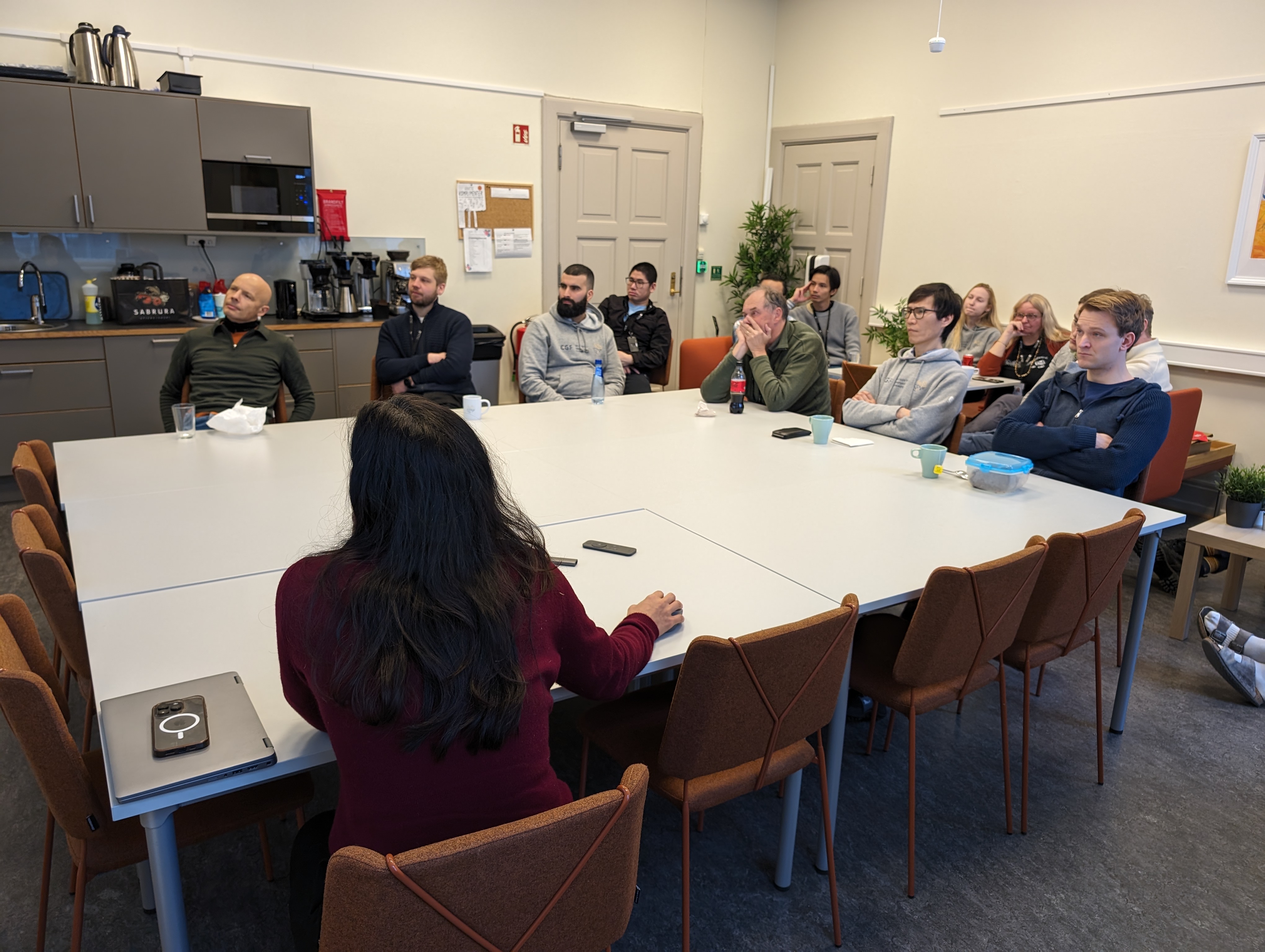
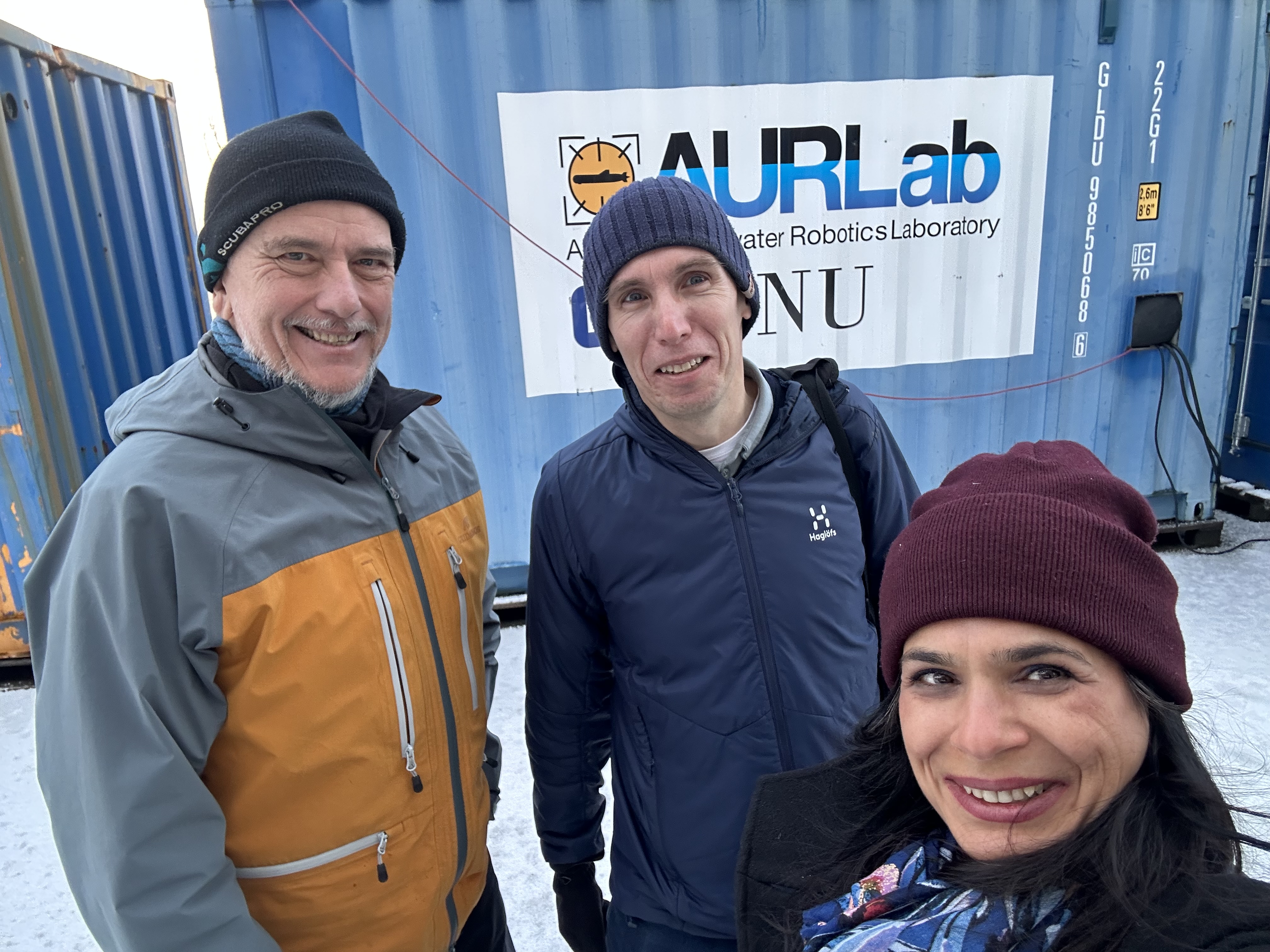
We were fortunate be able to welcome Assoc. Prof. Nina Mahmoudian to CGF and to learn about her group's research in Purdue University at a CGF seminar on Thursday. Nina made a flying visit to Trondheim to catch up with colleagues here who are interested in similar research topics. Nina's goal is to advance maritime autonomous systems capabilities to persistently observe environmental conditions and detect early warning indicators to maintain integrity of oceans and coastal areas. Nina has worked for many years on maritime vehicle autonomy and her interests clearly overlap those at CGF and other centres at NTNU, including AURLab, where we also had very interesting discussions with Martin Ludvigsen. Nina is currently visiting Joao Sousa in Portugal on a Fulbright scholarship.
23.09.18 – PhD Defence
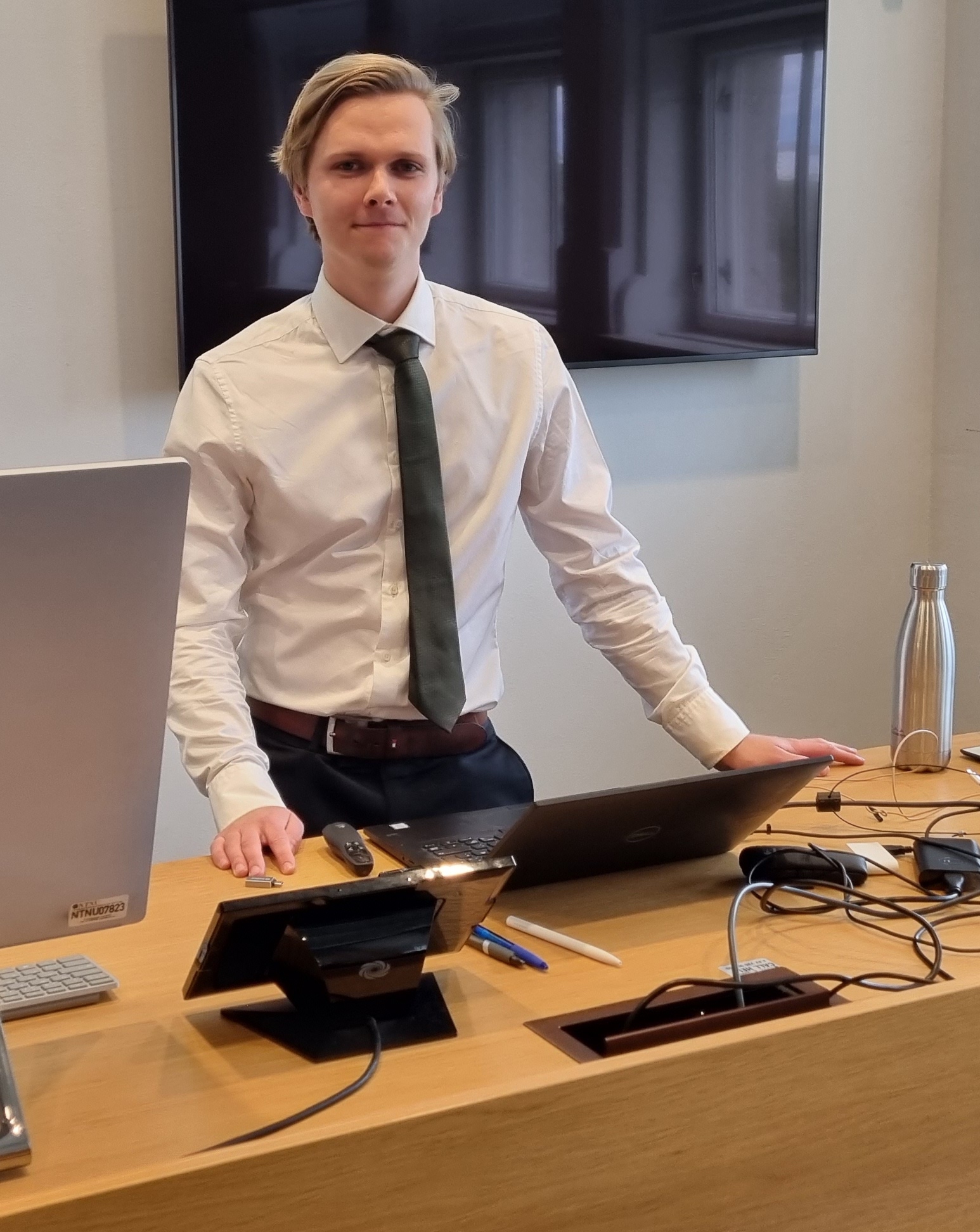
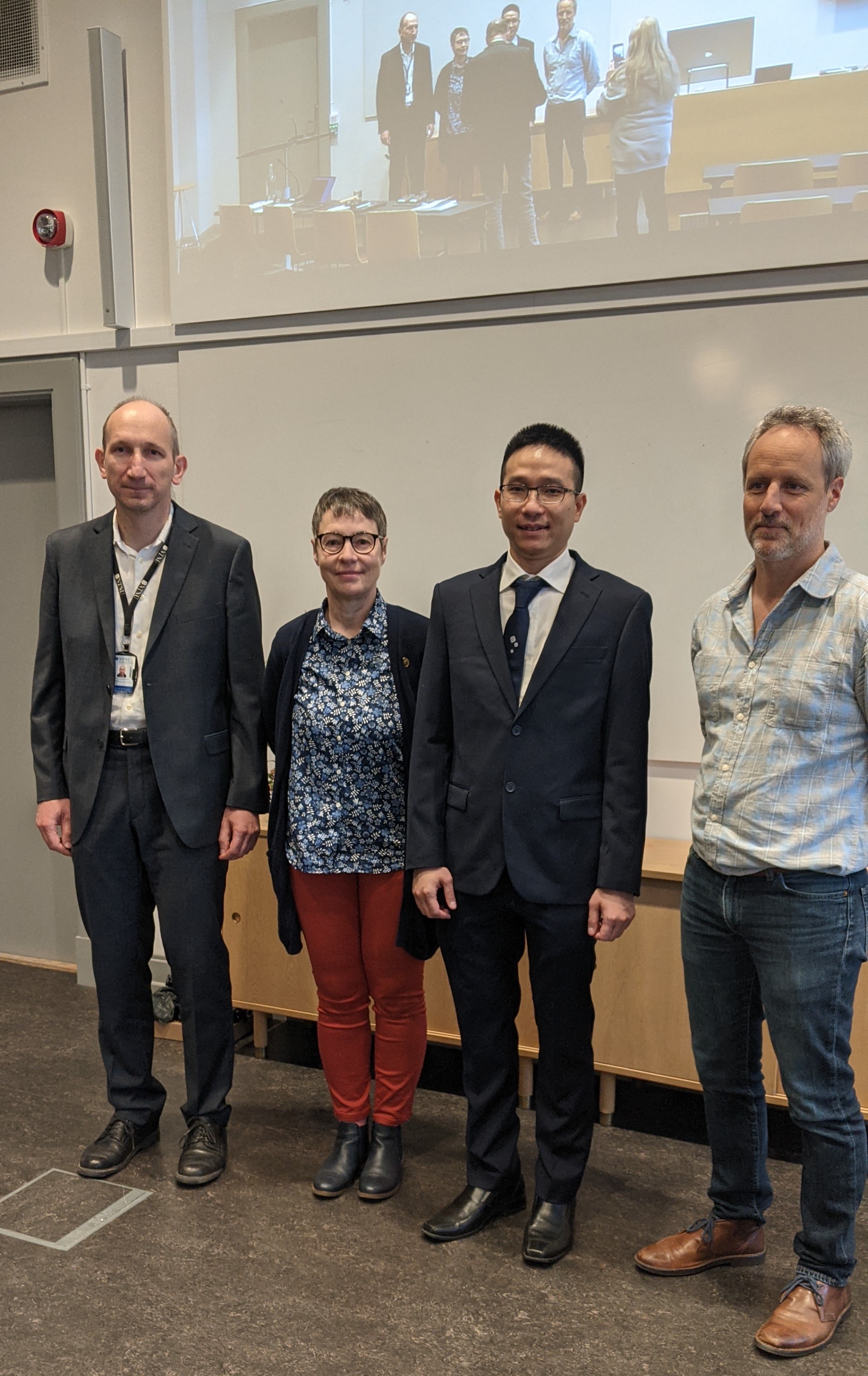
On the 18th September Robin Andre Rørstadbotnen defended his thesis entitled "Acoustic and Elastic wave Exploration and Monitoring using Dense Passive Arrays" and the next day Kittinat Taweesintananon defended his thesis "Distributed acoustic sensing and 4D seismic time-strain inversion for subsurface monitoring". We now have two newly-minted Doctors of Philosophy and we heartily congratulate both on their hard work and crowning educational achievement. We look forward to working with them as their careers grow in the future.
Robin has accepted a post doc position at CGF, where we welcome his continued contributions.
Kit is moving back to Bangkok, Thailand to work as a geophysicist in the Subsurface Technical Solutions Division of PTT Exploration and Production Plc. (PTTEP).
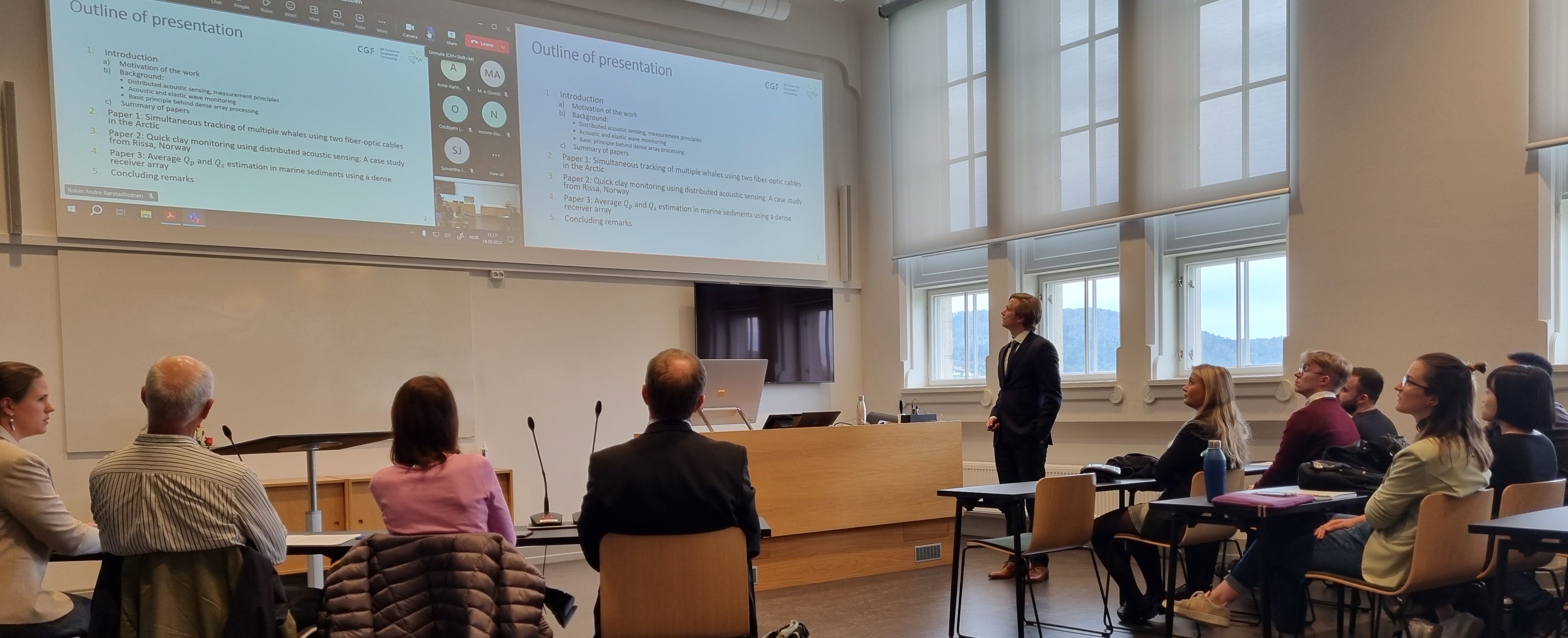
23.09.01
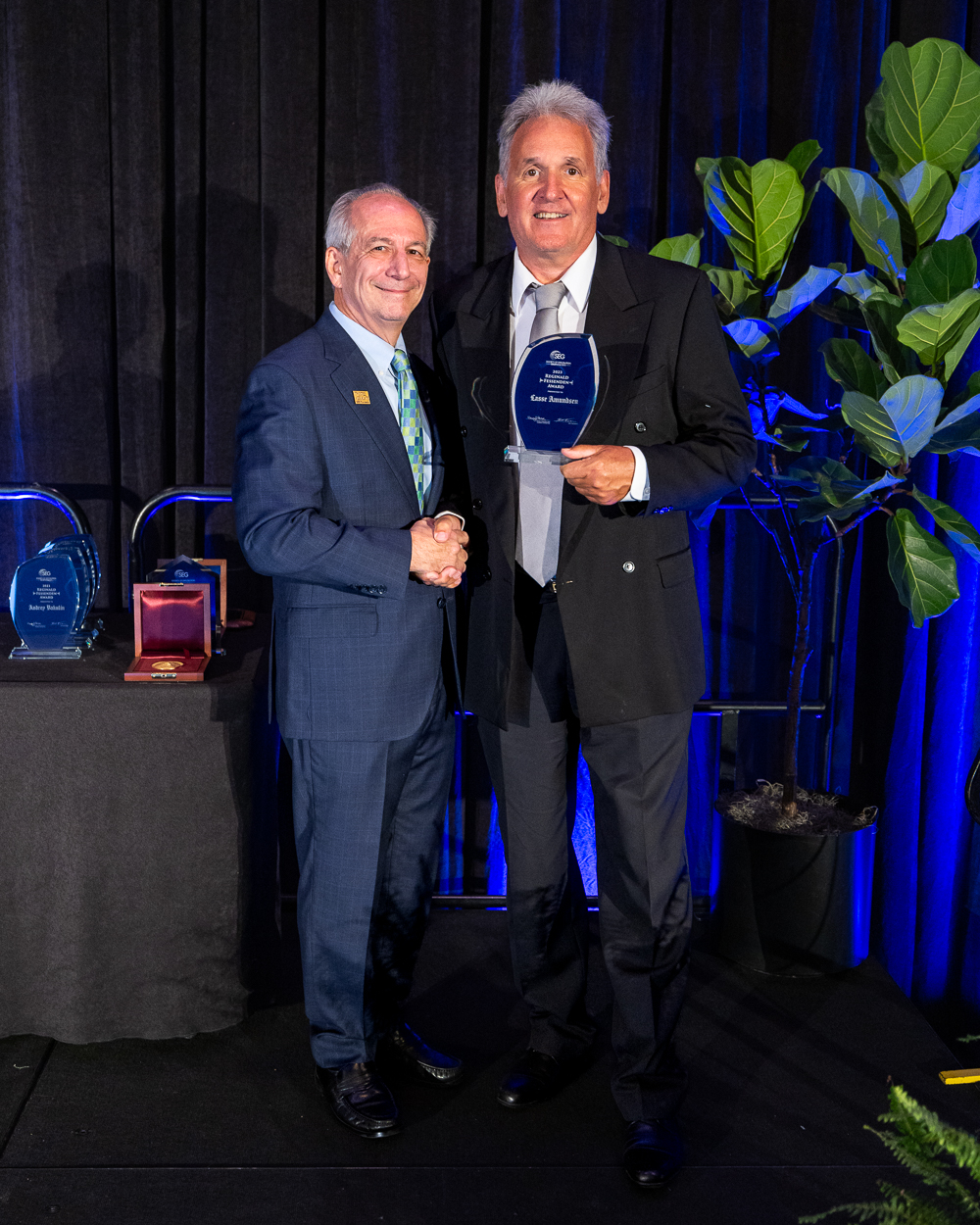
23.08.17
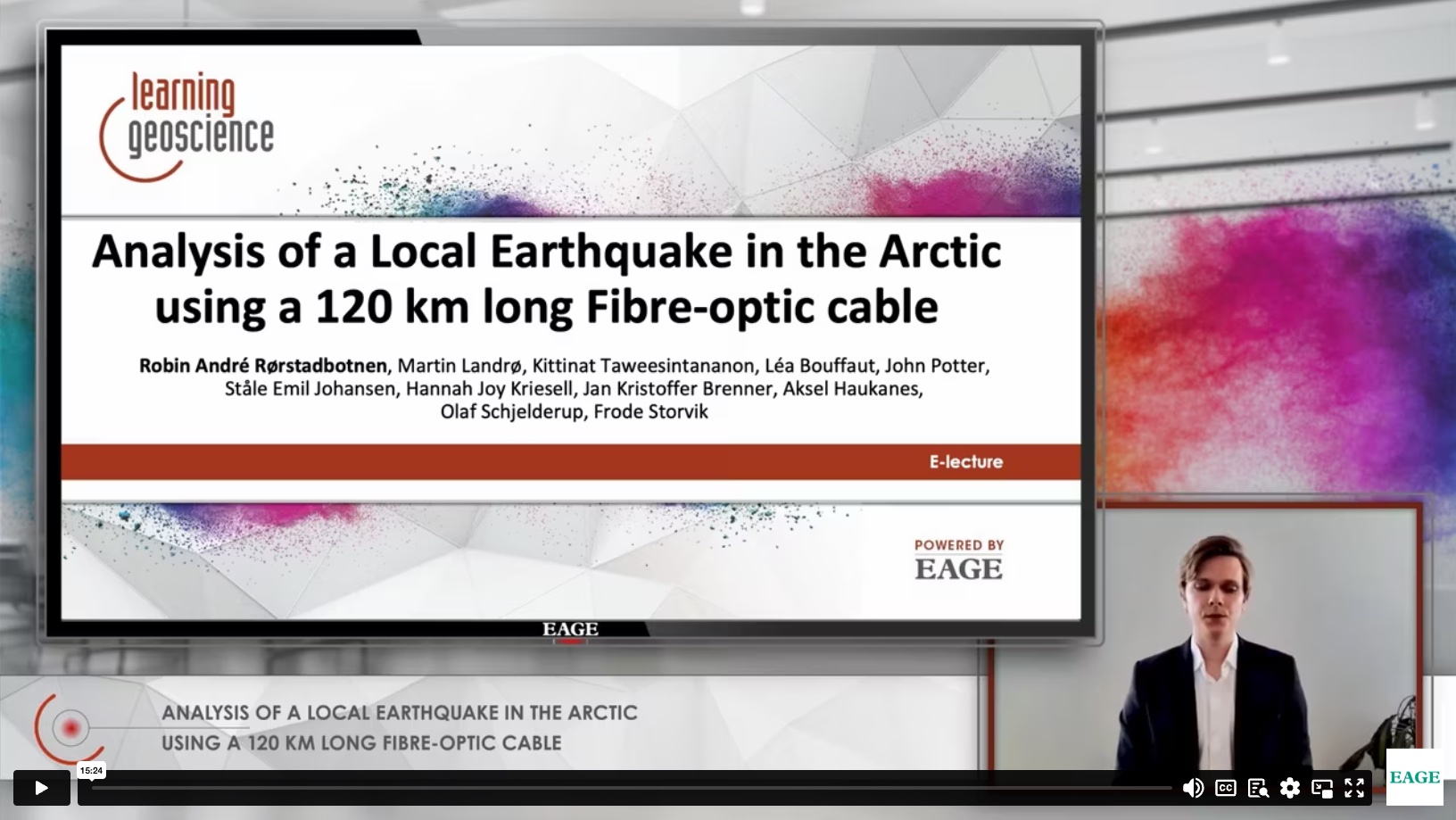
Robin Rørstadbotnen, one of our talented PhD students, was recently invited by EAGE to record an E-Lecture for its educational portal, Learning Geoscience. The invitation recognises Robin as a distinguished lecturer following his presentation at the EAGE Annual 2022 in Madrid, where his paper 'Analysis of a Local Earthquake in the Arctic Using a 120 KM Long Fibre-Optic Cable´ was presented. It was rated as one of the best rated talks at the event and was selected by the EAGE Education Committee. Robin's e-Lecture can be accessed at Analysis of a Local Earthquake in the Arctic using a 120 km long Fibre-Optic Cable (learninggeoscience.org)
23.06.21
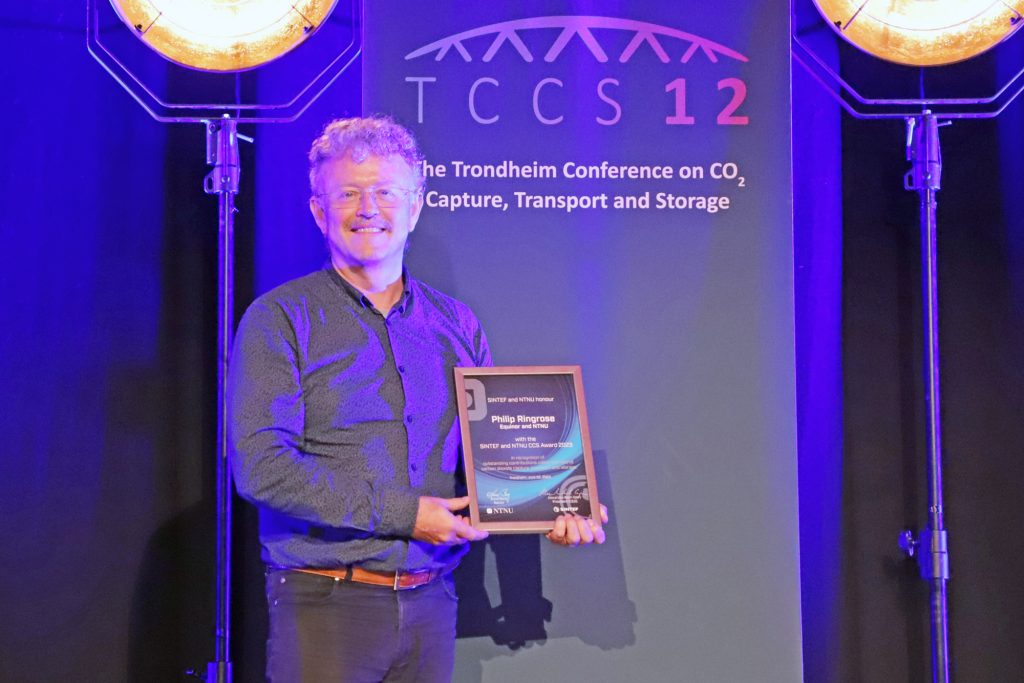
Professor Philip Ringrose (CGF WP leader on CO2 and gas/energy storage) has won the SINTEF and NTNU CCS Award 2023. He received the award during the conference dinner at the 12th Trondheim CCS Conference (TCCS-12).
Building on a solid scientific background as a geoscientist, Philip has specialised in applying his knowledge of the subsurface to CO2 storage, and has worked directly on several large-scale storage projects, such as Sleipner, Snøhvit and In Salah. He currently works as a specialist in geoscience at Equinor and an adjunct professor of CO2 storage at NTNU. On receiving the award, Philip declared “I’m really honoured, it’s really humbling to receive such a reward, thank you very much, it is a team effort and I’m really proud to be part of this huge team.” He chairs the Scientific Committee in the Norwegian CCS Research Centre (NCCS), and has been influential in establishing the CO2 DataShare project, which is an open digital portal for sharing data from international CCS projects.
TCCS is a non-profit, leading scientific conference that focuses on the research and development of CCS. Its objective is to advance, present and discuss the latest work in the field undertaken by R&D institutions, universities and industry. TCCS takes place every other year in Trondheim, Norway.
23.06.01
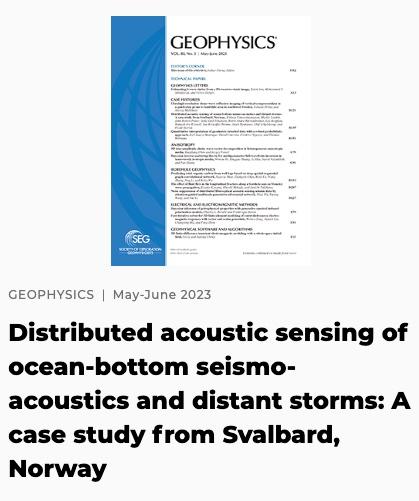
23.05.23
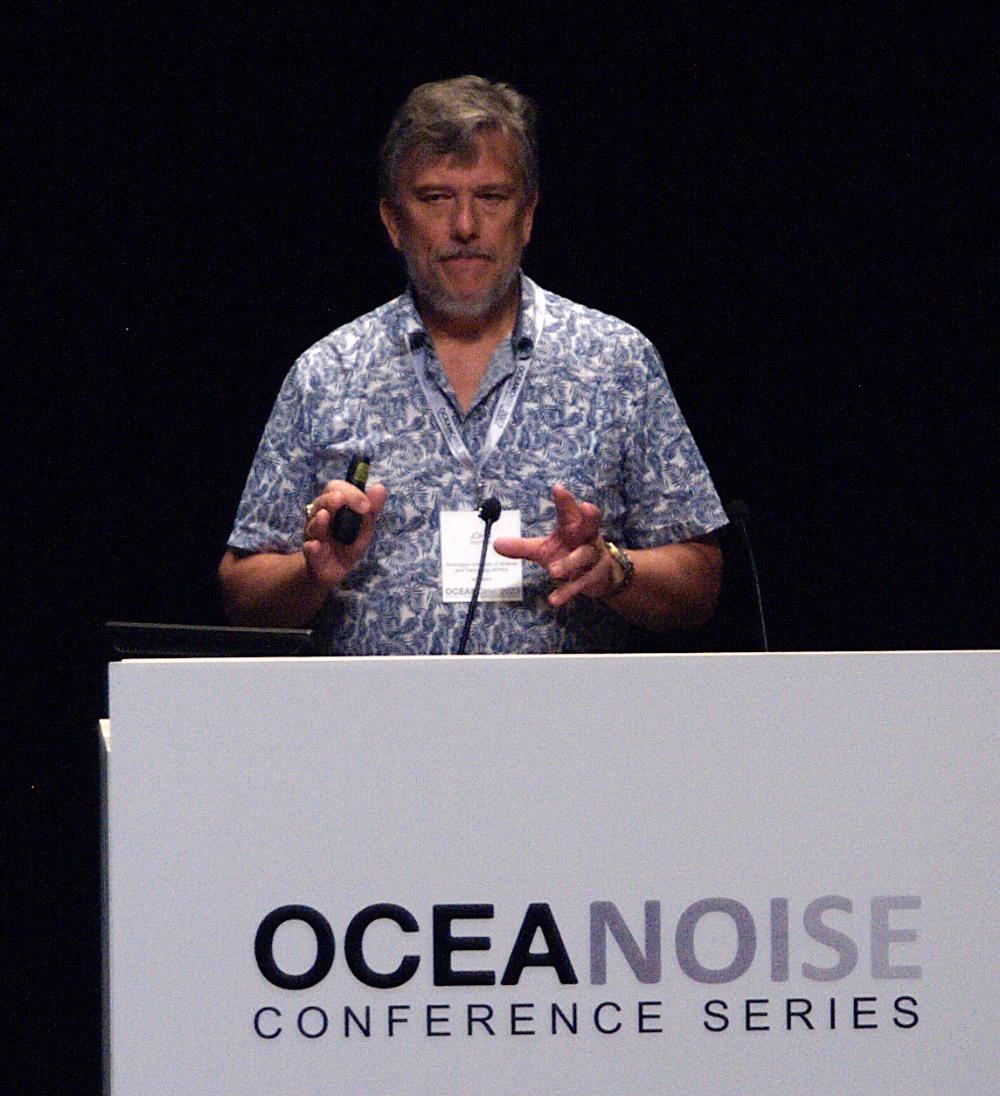
23.05.03
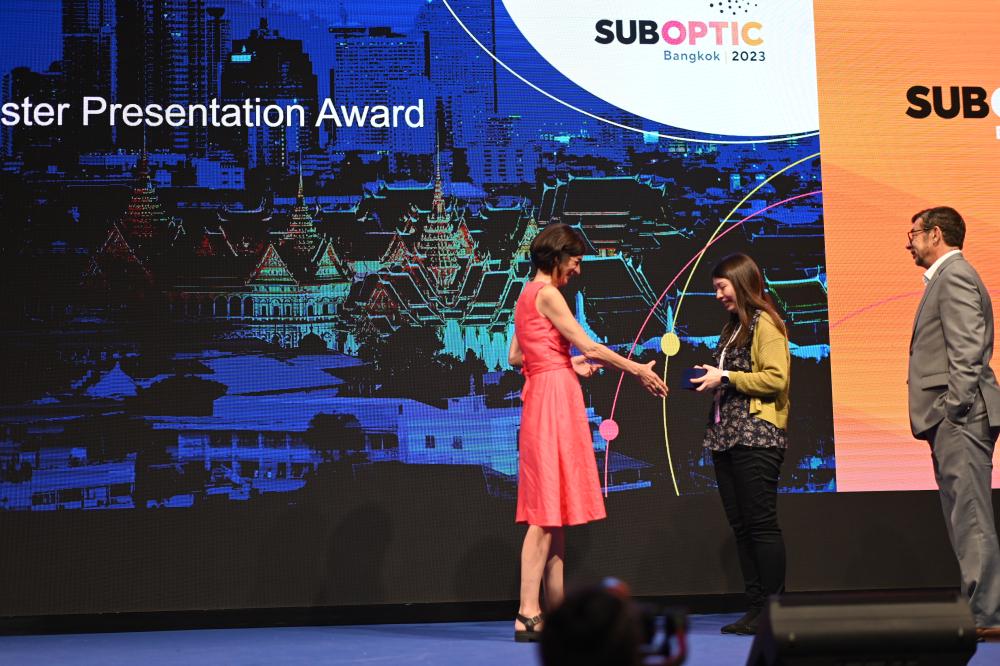
One of our talented PhD students, Kristina Shizuka Yamase Skarvang, was recently awarded ´Best Poster Presentation´ for her paper entitled "Comparing Sensitivity of State of Polarization Monitoring and Distributed Acoustic Sensing in the Svalbard Arctic Submarine Communication Cable" at the SubOptic 2023 conference in Bangkok. SubOptic is a triennial event for the submarine cable industry and this year was focussed on ´Collaborating on our Critical Infrastructure´.
23.03.20 - CGF supervised student wins Best Masters' Thesis award
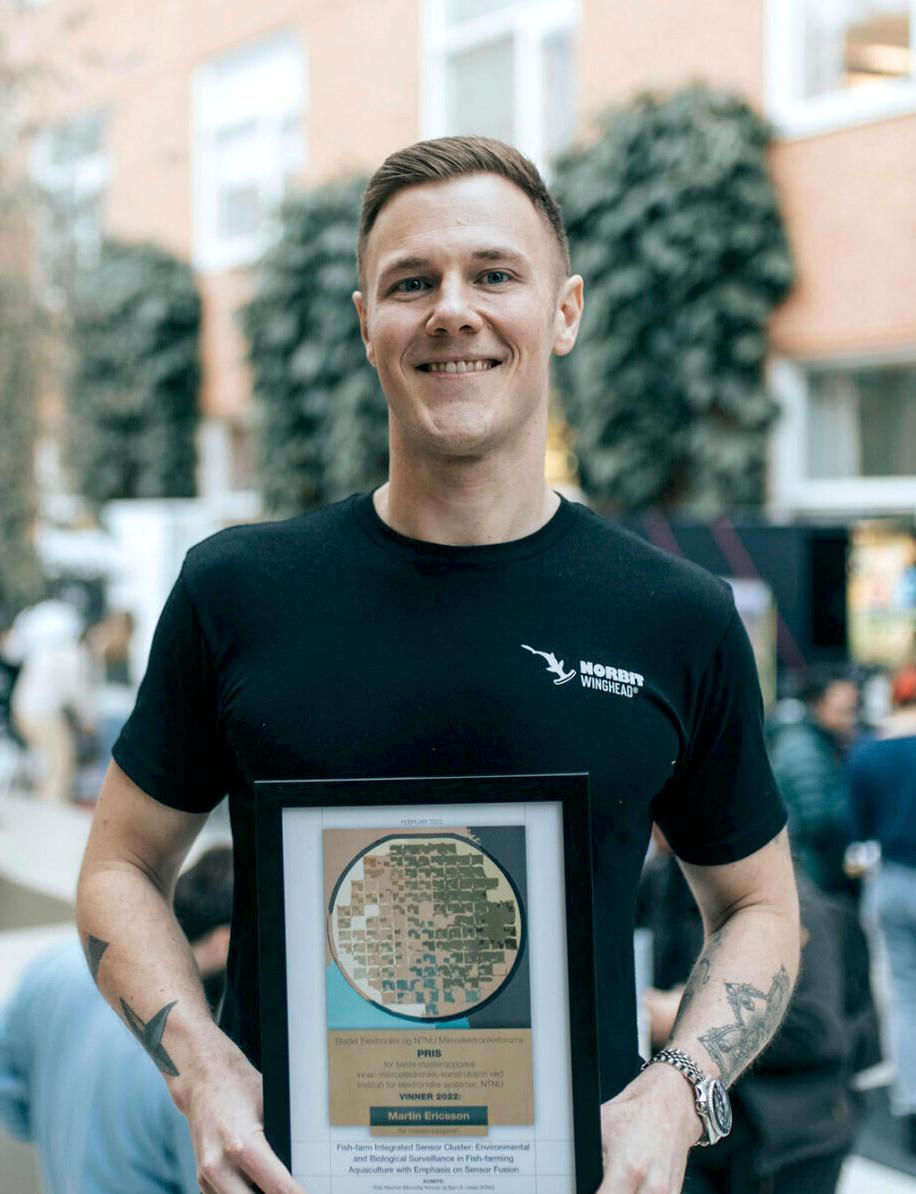
23.03.10 - GeoExPro article on global data sharing
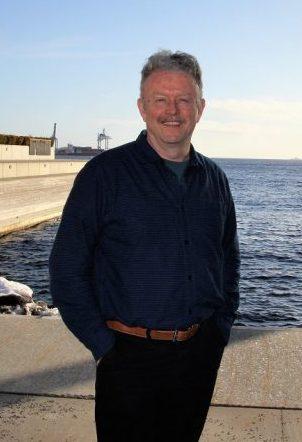
23.03.06 - Introducing recent arrivals at CGF!
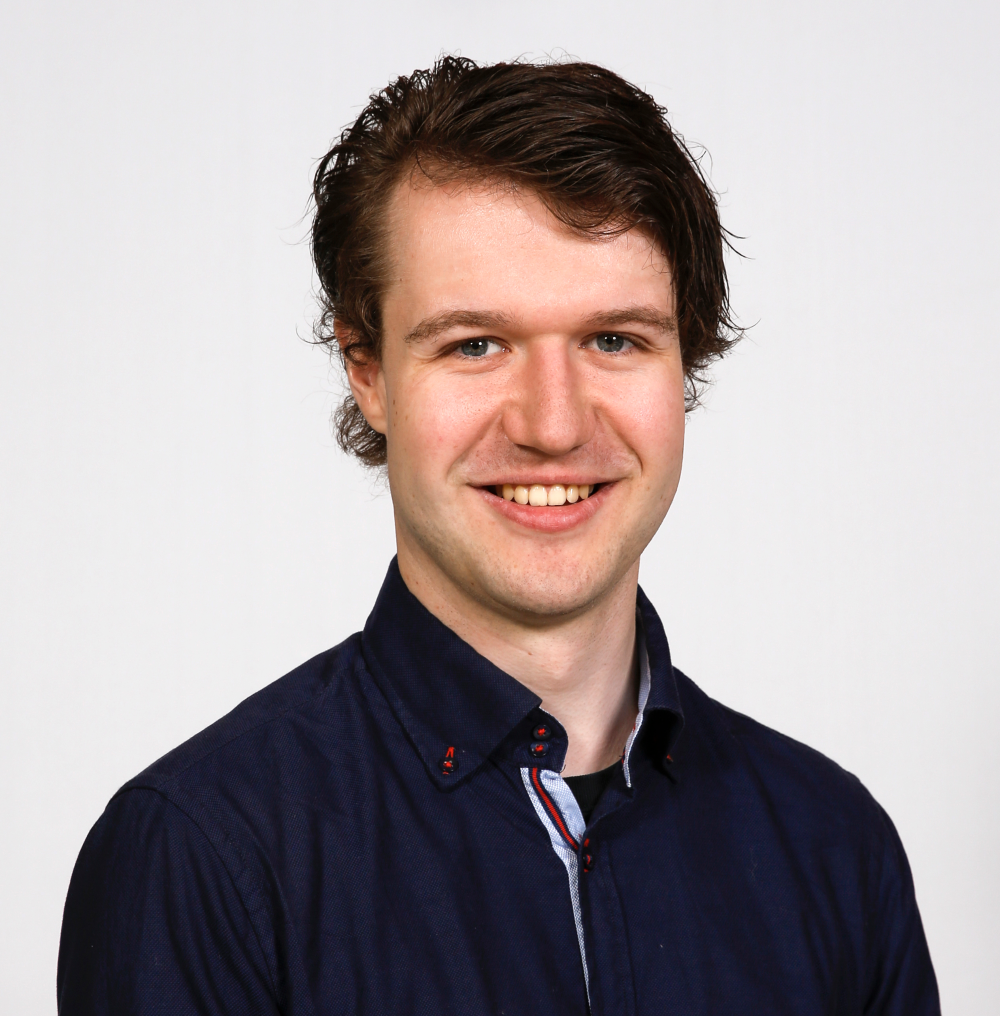
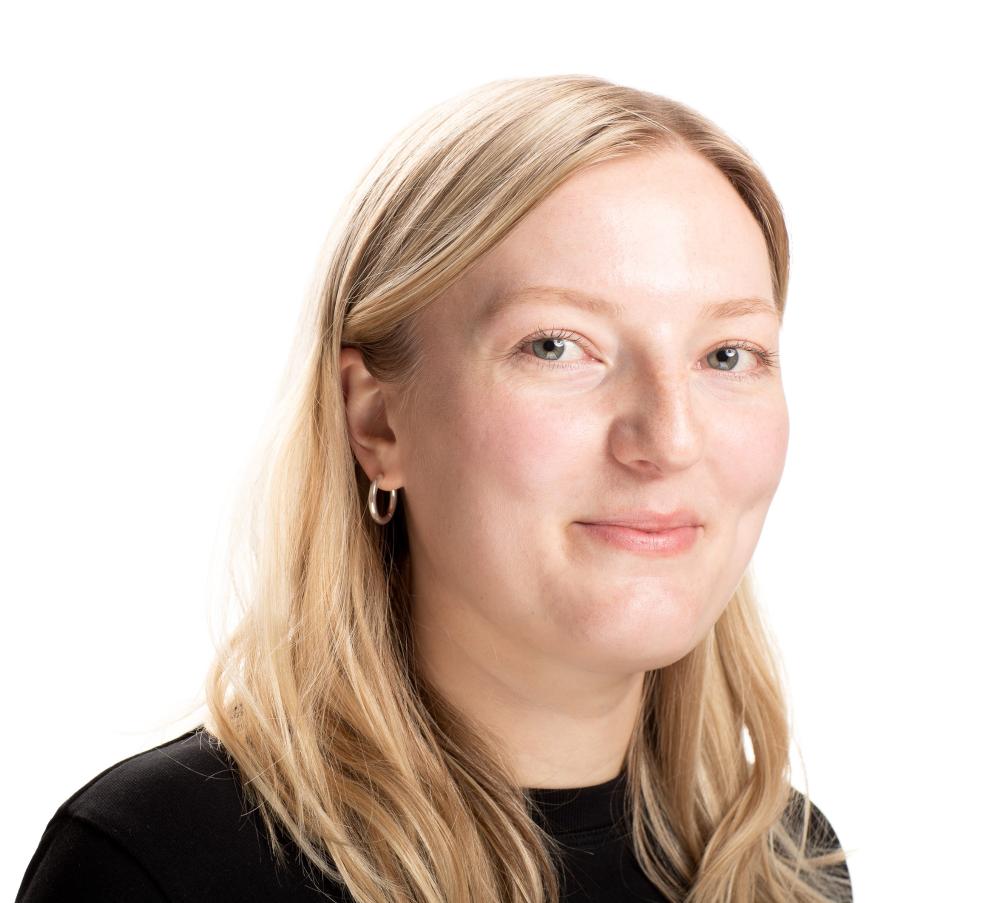
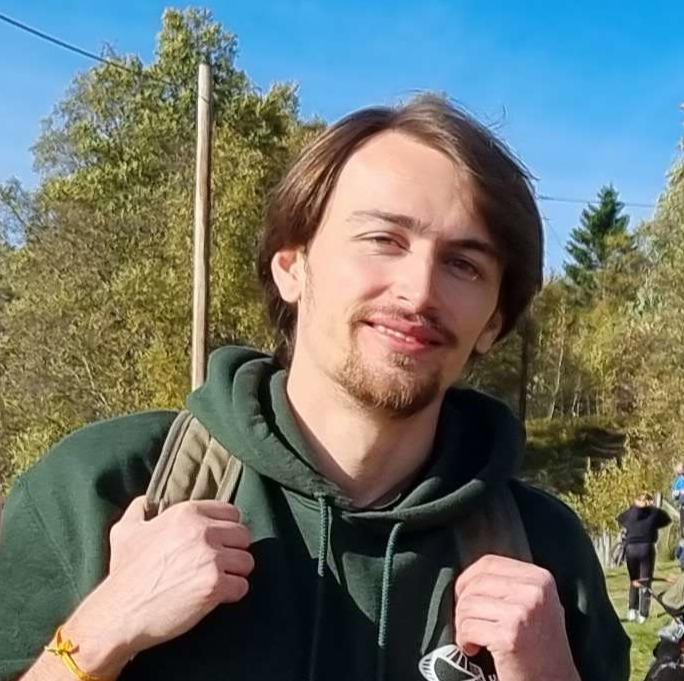
University of Barcelona, where he obtained his bachelor's degree in mathematics and was subsequently employed in the modelling group, working with cutting-edge mathematical advances and their implementation to real-life problems for various industry clients. While enrolled in a master's degree in modelling for science and engineering at the same university, he participated in a project on high-performance computing during his work placement and master's thesis at the Barcelona Biomedical Research Park. In his PhD thesis with WP5, he will be working on developing a
high-performance computing framework for preprocessing large datasets related to high-resolution geophysical monitoring, combining his mathematical modelling background with his high-performance computing experience.
23.02.20
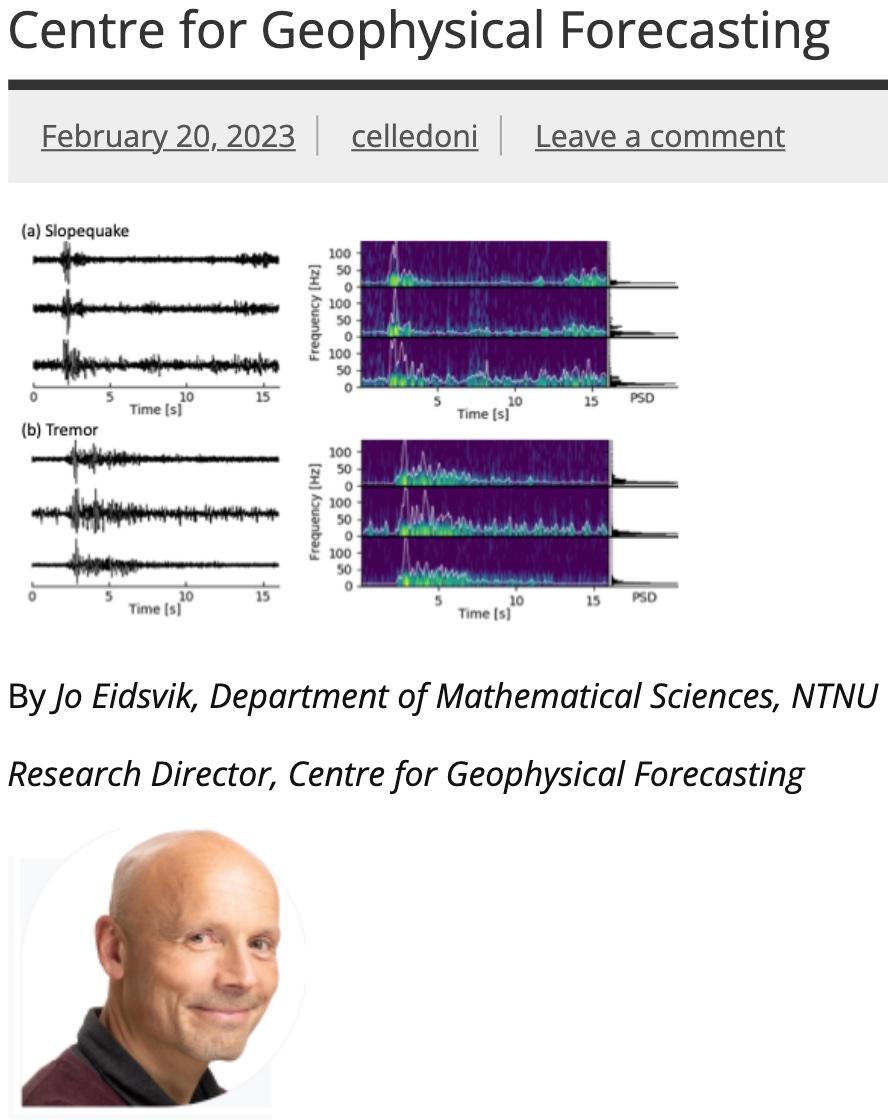
Our Research Director, Prof. Jo Eidsvik, is featured in the European Consortium for Mathematics in Industry (ECMI) blog today!
23.02.15
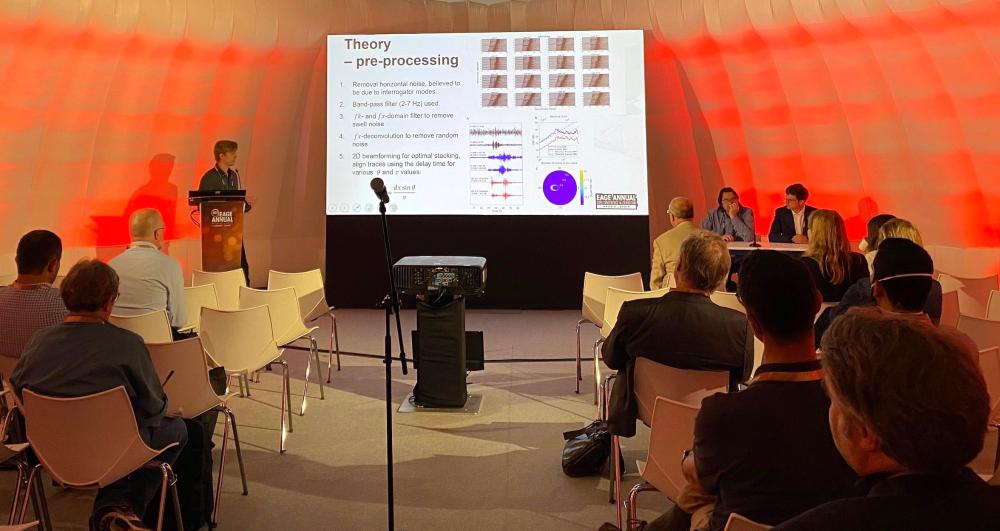
23.02.09
The disastrous magnitude 7.8 earthquake that struck Turkey and Syria on Monday 6th February was reported by our Partner, NORSAR and was also clearly observed on the seabottom fibre connecting Longyearbyen and Ny-Ålesund (Svalbard), which we are monitoring with DAS.
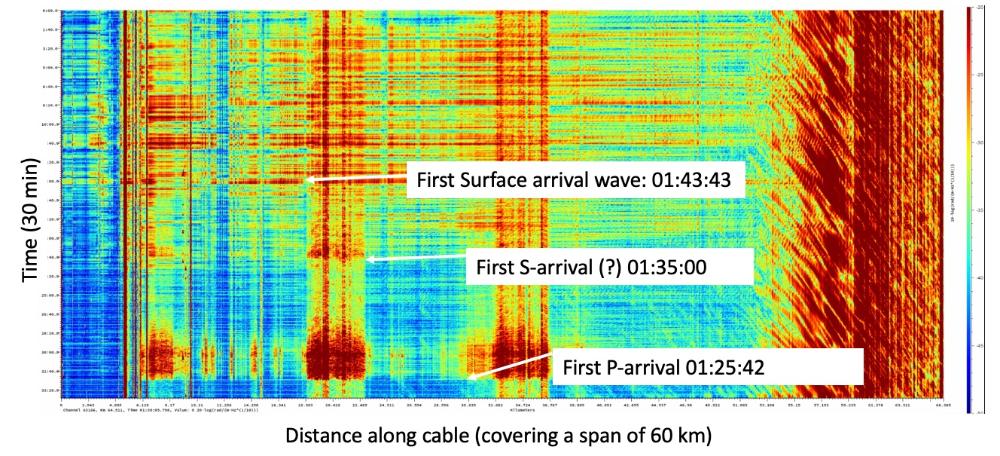
The image represents DAS data from roughly half an hour (vertical axis) and 60 km of the cable located in Kongsfjorden. The earthquake occurred at 01:17:35 UTC, as reported by USGS. The first arrival (P) is clearly observed at 01:25:42 (UTC). This wave travelled deep into the earth and took 8 minutes to arrive. The next observed signal (generated by the same earthquake) is the secondary (shear) wave arriving 18 minutes after the quake and the final (third) signal is the surface (Rayleigh) wave arriving 26 minutes after the quake.
The approximate epicentral distance to Svalbard is 4,780 km. If we assume that the P-, S- and surface- waves each travelled roughly the same distance we can estimate the following velocities for the three waves: 9.8 km/s, 4.3 km/s and 3.0 km/s.
23.01.10
Tjuvlytter på jordkloden med fiberoptiske kabler
A very readable (if you can read Norwegian!) article has just been published. It explains some of the exciting things we are doing at CGF in clear terms that are accessible to the general scientist and curious public. Check it out on the Gemini.no site! (https://gemini.no/2023/01/tjuvlytter-pa-jordkloden-med-fiberoptiske-kabler/).

CGF Annual Reports
22.04.01
The 2021 annual report is available online for download.
21.04.01
The 2020 annual report is available online for download.
